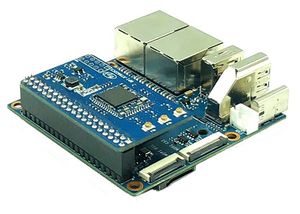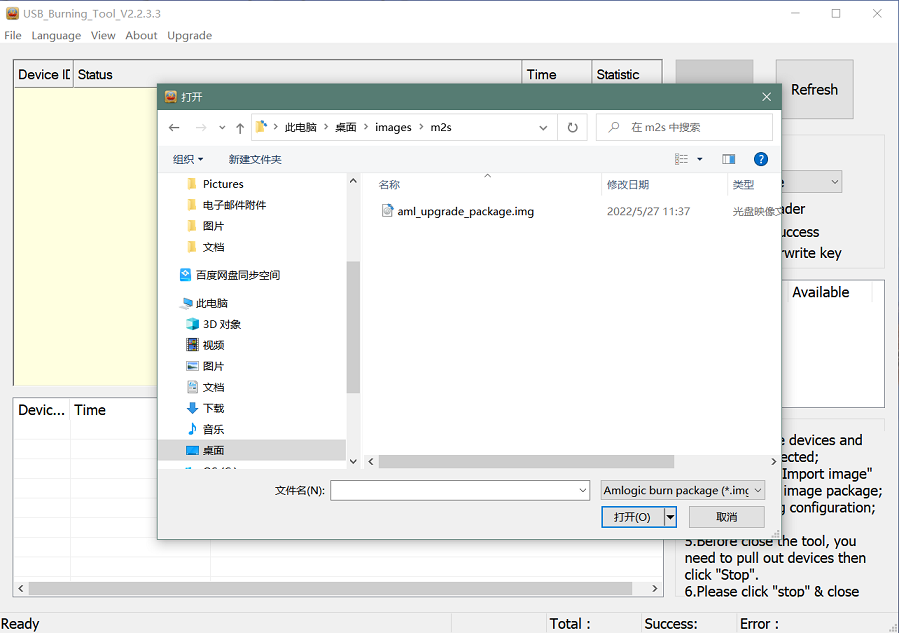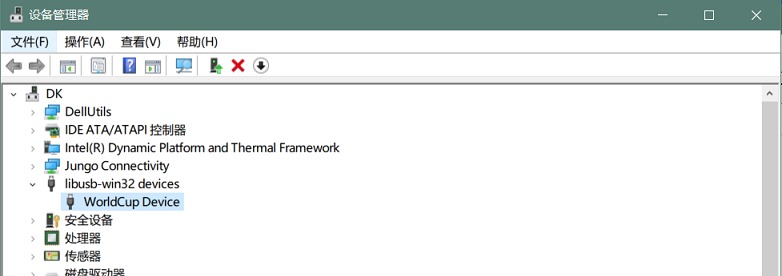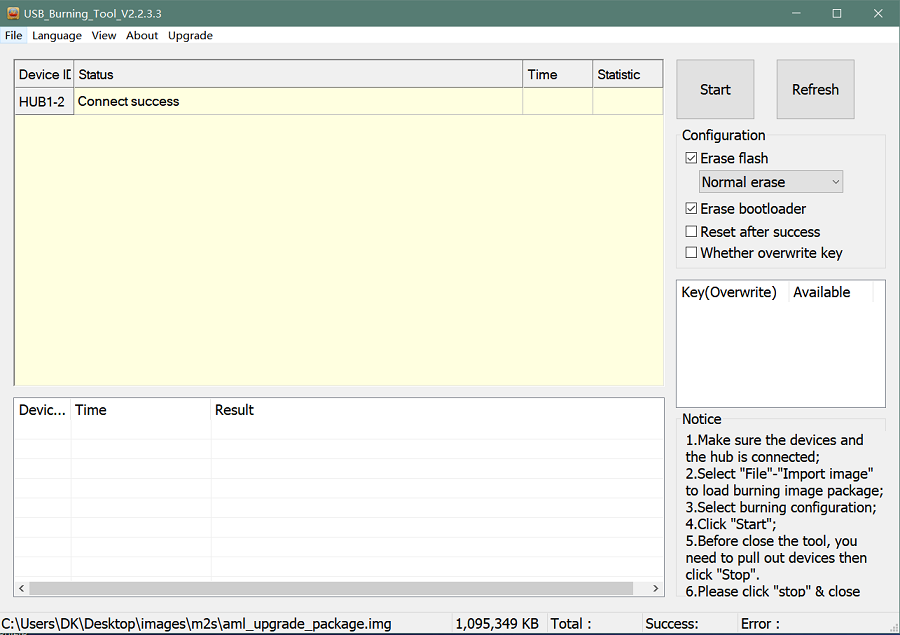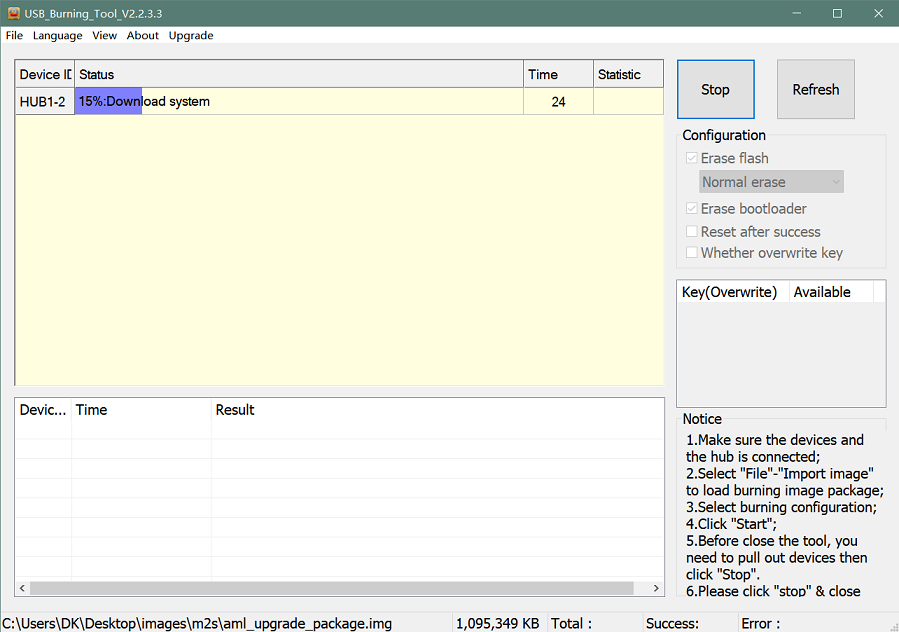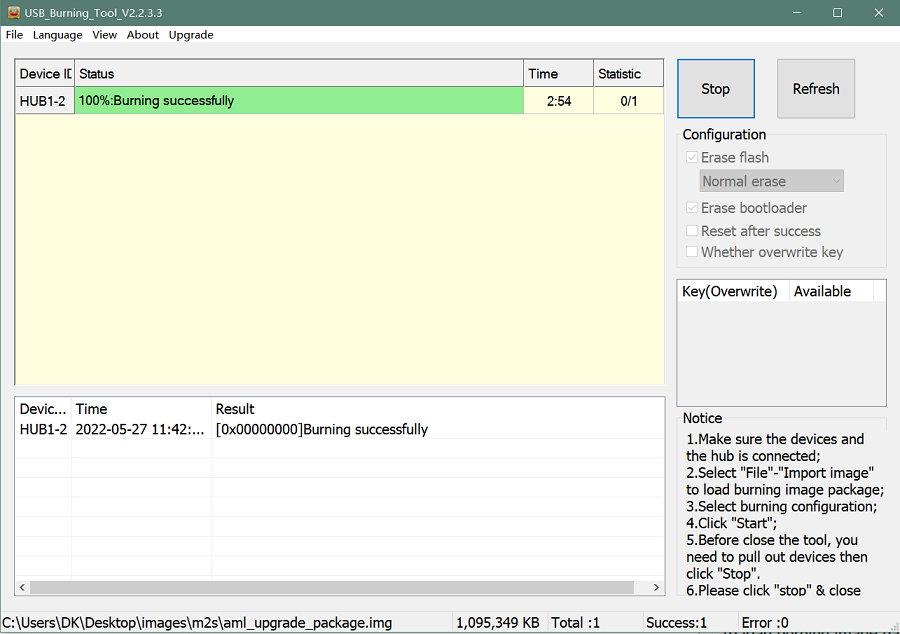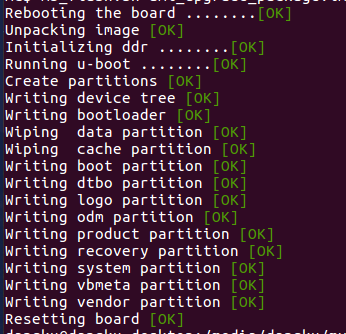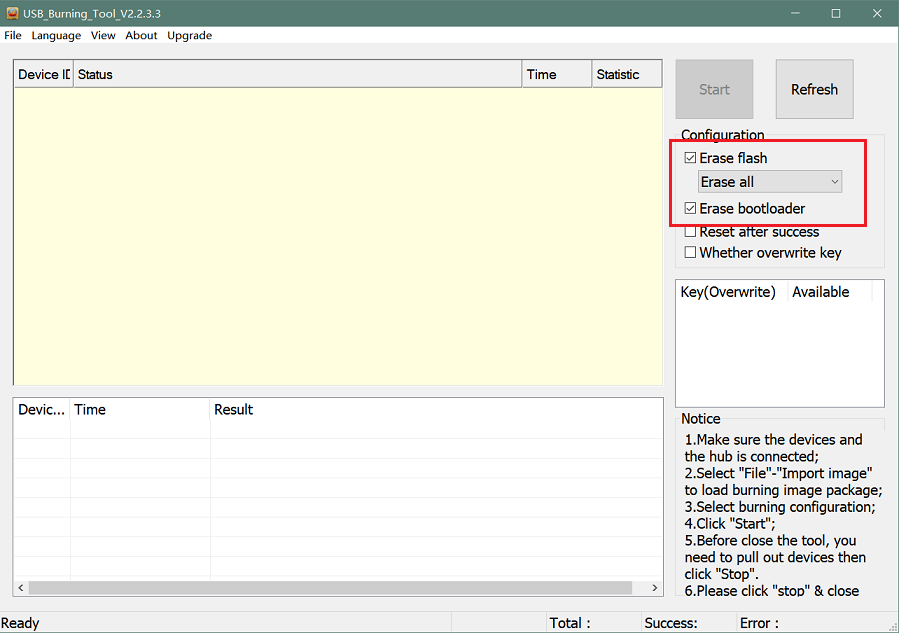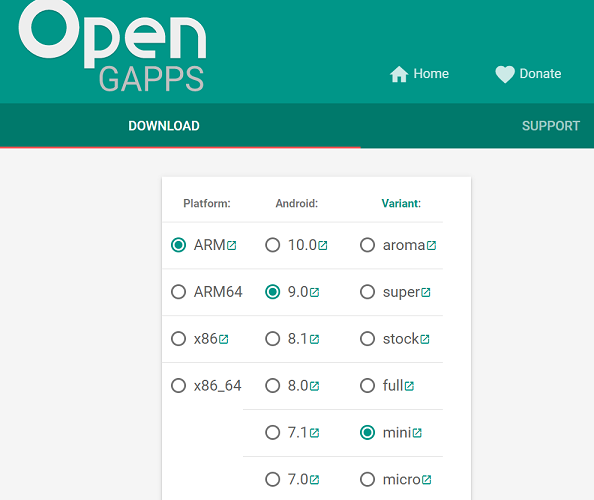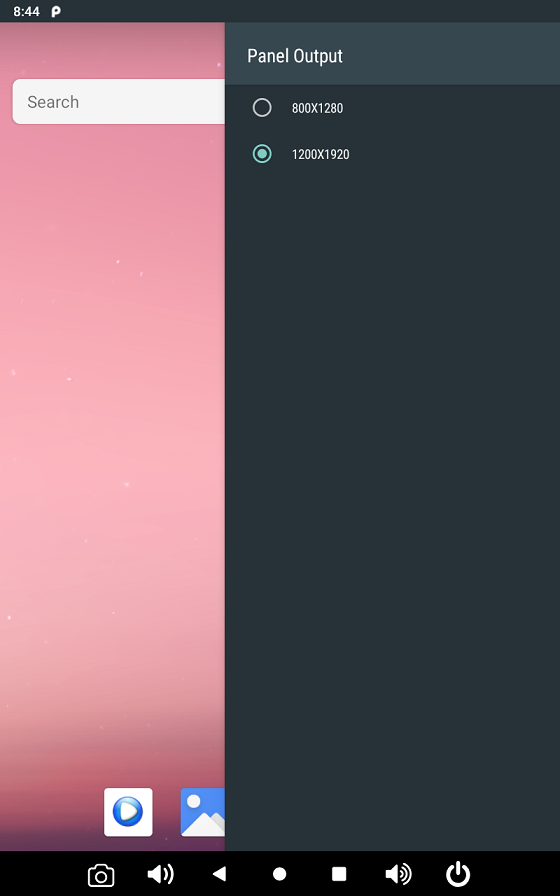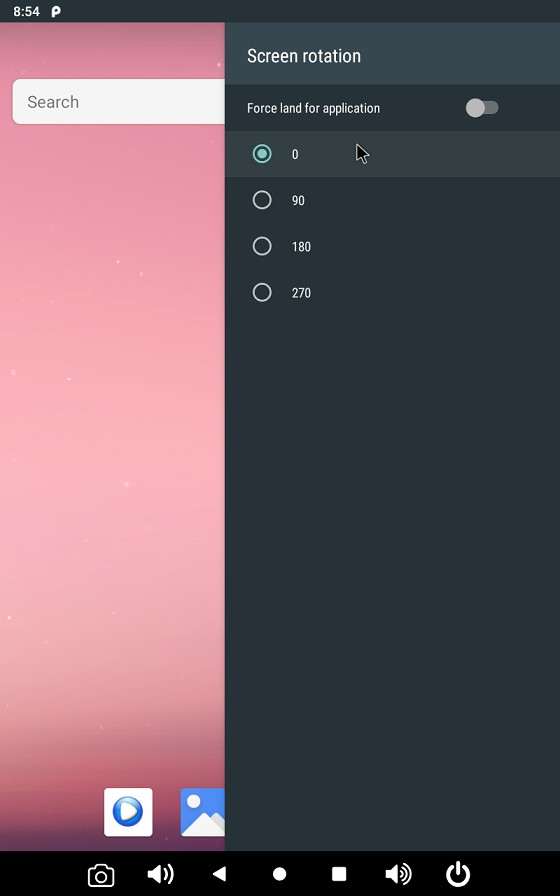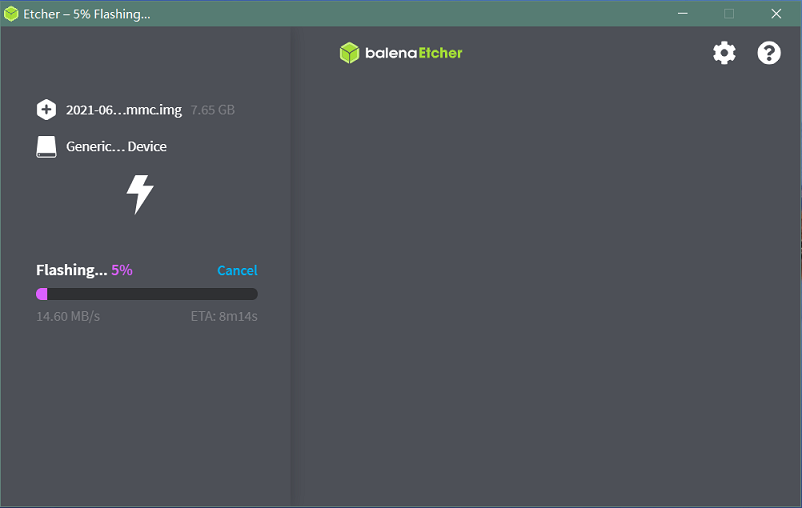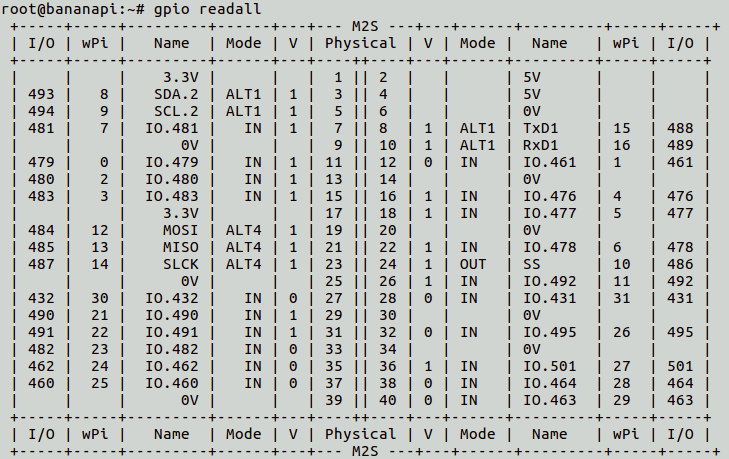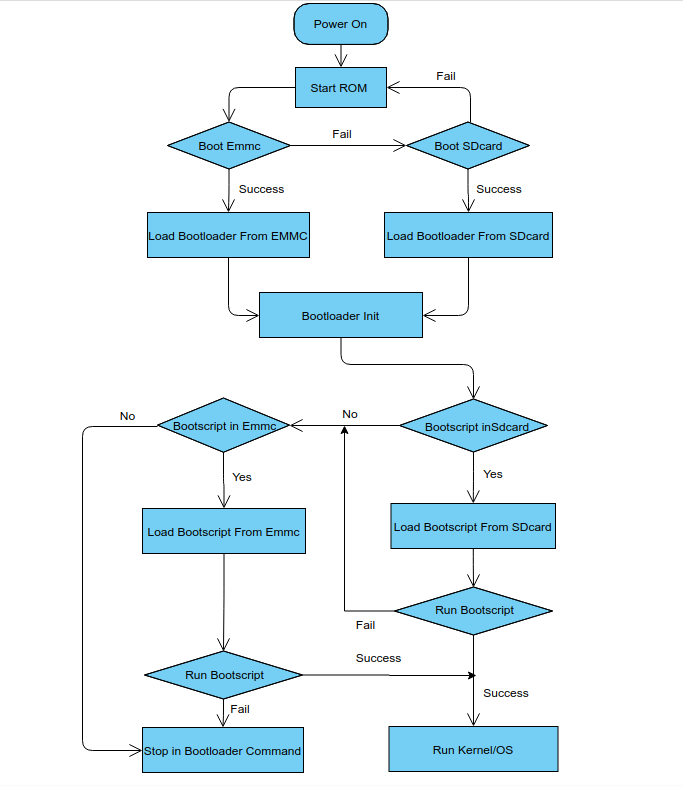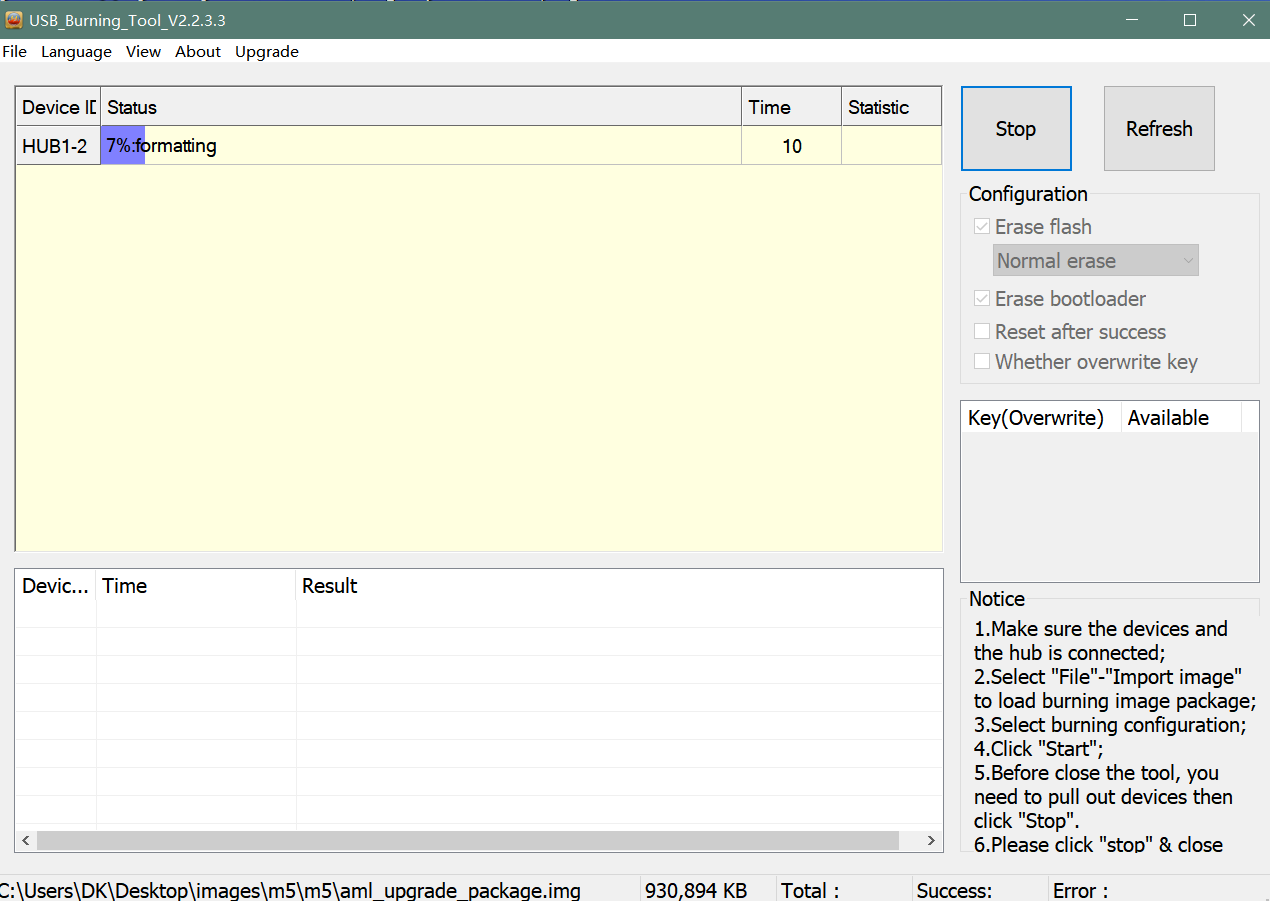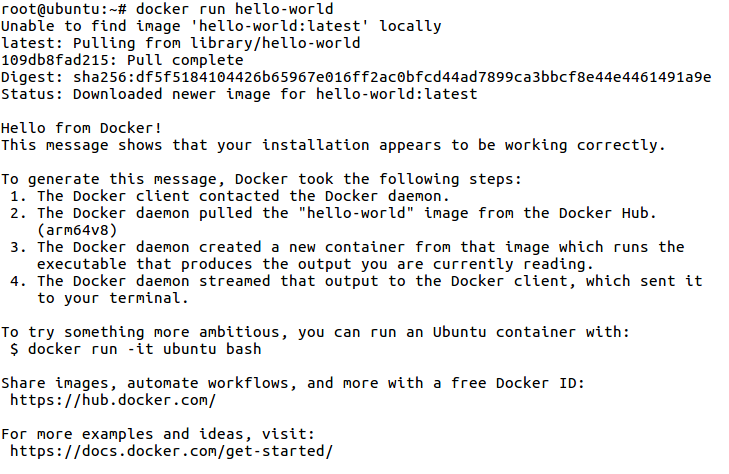Difference between revisions of "Getting Started with M2S"
(→specifications) |
(→WiringPi2-Python) |
||
| (149 intermediate revisions by 2 users not shown) | |||
| Line 1: | Line 1: | ||
=Introduction= | =Introduction= | ||
| + | [[File:Banana_Pi_BPI-M2S_1.jpg|thumb|[[Banana Pi BPI-M2S]] Amlogic A311D chip]] | ||
| + | [[File:Banana_Pi_BPI-M2S_S922_1.jpg|thumb|[[Banana Pi BPI-M2S]] Amlogic S922x chip]] | ||
| + | [[File:Banana_Pi_BPI-M2S_with_poe.jpg|thumb|BPI-M2S with [[BPI-9600 IEEE 802.3af PoE module]]]] | ||
| + | [[File:Banana_Pi_BPI-M2S_with_wifi_and_BT_module.jpg|thumb|BPI-M2S with Wifi&BT module]] | ||
| + | [[File:BPI-M2_Pro_2.jpg|thumb|[[Banana Pi BPI-M2 Pro]] S905x3 design]] | ||
| + | [[File:Banana_Pi_BPI-M5_4.JPG|thumb|[[Banana Pi BPI-M5]] Amlogic S905x3 design]] | ||
=specifications= | =specifications= | ||
| Line 9: | Line 15: | ||
:2. Prepare a SDcard at least 8GB for linux development, android only support emmc boot. | :2. Prepare a SDcard at least 8GB for linux development, android only support emmc boot. | ||
:3. The SOC rom first boot media is emmc, so board can't bootup from SDcard if the emmc is bootable with any image flashed, more info please refer to board [http://wiki.banana-pi.org/Getting_Started_with_BPI-M5#Boot_Sequence boot sequence]. | :3. The SOC rom first boot media is emmc, so board can't bootup from SDcard if the emmc is bootable with any image flashed, more info please refer to board [http://wiki.banana-pi.org/Getting_Started_with_BPI-M5#Boot_Sequence boot sequence]. | ||
| − | :4. | + | :4. Only A311D variant board have camera, mipi panel and npu support. |
==Android== | ==Android== | ||
| Line 15: | Line 21: | ||
:1. Download and install the [https://download.banana-pi.dev/d/3ebbfa04265d4dddb81b/files/?p=%2FTools%2Fimage_download_tools%2Faml_usb_burning_tool_V2_setup_v2.2.3.3.zip AML Usb Burning Tool] for android image download via type-c, only support windows. | :1. Download and install the [https://download.banana-pi.dev/d/3ebbfa04265d4dddb81b/files/?p=%2FTools%2Fimage_download_tools%2Faml_usb_burning_tool_V2_setup_v2.2.3.3.zip AML Usb Burning Tool] for android image download via type-c, only support windows. | ||
| − | :2. Download the latest [ | + | :2. Download the latest [https://wiki.banana-pi.org/Banana_Pi_BPI-M2S#Android android image], and confirm that the md5 checksum is correct. |
===Install Image with Usb Burning Tool=== | ===Install Image with Usb Burning Tool=== | ||
| Line 21: | Line 27: | ||
:1. Open USB_Burning_Tool.exe, select menu File->Import image, choose the android image file aml_upgrade_package.img. | :1. Open USB_Burning_Tool.exe, select menu File->Import image, choose the android image file aml_upgrade_package.img. | ||
| − | :[[File: | + | :[[File:m2s_android_install_1.png]] |
| − | :2. | + | :2. Press and hold USB button on the board, plugin type-c usb cable to PC or press the RST button if power adapter already connected, about two seconds later, release the button, the board will be identified correctly. |
| − | :[[File: | + | :[[File:m2s_android_install_3.png]] |
| + | :[[File:m2s_android_install_2.png]] | ||
| − | :3. Click the Start button and wait for upgrade complete. | + | :3. Click the Start button of the download tool and wait for upgrade complete. |
| − | :[[File: | + | :[[File:m2s_android_install_4.png]] |
:4. After Burning successfull, Unplug the type-c usb and connect to power supply adaptor to startup. | :4. After Burning successfull, Unplug the type-c usb and connect to power supply adaptor to startup. | ||
| − | :[[File: | + | :[[File:m2s_android_install_5.png]] |
| Line 51: | Line 58: | ||
:1. Get Android 9.0 source code | :1. Get Android 9.0 source code | ||
| − | $ | + | $ https://github.com/BPI-SINOVOIP/BPI-A311D-Android9 |
| + | |||
| + | :or you can get the source code tar archive from [https://pan.baidu.com/s/1rANGEB-1MLPCBXqOR5aYCg?pwd=8888 BaiduPan(pincode: 8888)] or [https://drive.google.com/drive/folders/1INIABp_MbB5UcwfqujTngGLOZN7YGuWp?usp=share_link GoogleDrive] | ||
:2. Build the Android 9.0 Source code | :2. Build the Android 9.0 Source code | ||
| − | :Please read the source code [https://github.com/BPI-SINOVOIP/BPI- | + | :Please read the source code [https://github.com/BPI-SINOVOIP/BPI-A311D-Android9/blob/master/README.md README.md] |
===Android DTB overlay=== | ===Android DTB overlay=== | ||
| − | :Bananapi | + | :Bananapi M2S DTBO idx value table, default idx value is 0 in release image. |
:{| class="wikitable" | :{| class="wikitable" | ||
|- | |- | ||
| − | | style="background: PaleTurquoise; color: black" colspan="4"| '''Bananapi | + | | style="background: PaleTurquoise; color: black" colspan="4"| '''Bananapi M2S DTBO idx value table''' |
|- | |- | ||
|idx value|| device tree overlay || description | |idx value|| device tree overlay || description | ||
| Line 71: | Line 80: | ||
| 1|| wifi_bt_rtl8822cs|| enable bpi rtl8822cs wifi/bt module | | 1|| wifi_bt_rtl8822cs|| enable bpi rtl8822cs wifi/bt module | ||
|- | |- | ||
| − | | 2|| | + | | 2|| i2c1|| enable i2c 1 |
|- | |- | ||
| − | | 3|| | + | | 3|| i2c2|| enable i2c 2 |
|- | |- | ||
| 4|| sdio|| enable sdio | | 4|| sdio|| enable sdio | ||
| Line 95: | Line 104: | ||
remount succeeded | remount succeeded | ||
root@dangku-desktop:/tmp# adb shell | root@dangku-desktop:/tmp# adb shell | ||
| − | + | bananapi_m2s:/ # echo dtbo > /sys/class/unifykeys/name | |
| − | + | bananapi_m2s:/ # echo "1" > /sys/class/unifykeys/write | |
| − | + | bananapi_m2s:/ # reboot | |
:2. Uart console command via sysfs | :2. Uart console command via sysfs | ||
| Line 129: | Line 138: | ||
:Unifykeys is stored in a specific emmc part, "Normal erase" selected in USB_Burning_Tool will not erase this data for next update, you must select "Erase all" if you want the default dtbo idx to be applied after image download. | :Unifykeys is stored in a specific emmc part, "Normal erase" selected in USB_Burning_Tool will not erase this data for next update, you must select "Erase all" if you want the default dtbo idx to be applied after image download. | ||
| − | :[[File: | + | :[[File:m2s_android_erase_all.png]] |
:'''Build Android image with a specific DTBO default'''. | :'''Build Android image with a specific DTBO default'''. | ||
| − | :1. Default build-in overlays are defined in device/ | + | :1. Default build-in overlays are defined in device/bananapi/bananapi_m2s/Kernel.mk, you can add a new overlay dtbo here. |
| − | DTBO_DEVICETREE := android_p_overlay wifi_bt_rtl8822cs i2c2 | + | DTBO_DEVICETREE := android_p_overlay wifi_bt_rtl8822cs i2c1 i2c2 sdio uart1 uart1_cts_rts uart2 hifi_pcm5122 |
| − | :2. Default apply DTBO idx is defined in device/ | + | :2. Default apply DTBO idx is defined in device/bananapi/bananapi_m2s/BoardConfig.mk, you can change the idx value to set which overlay dtbo will be applied default. |
BOARD_KERNEL_CMDLINE += androidboot.dtbo_idx=0 | BOARD_KERNEL_CMDLINE += androidboot.dtbo_idx=0 | ||
| − | :3. DTS files are in common/arch/ | + | :3. DTS files are in common/arch/arm64/boot/dts/amlogic/overlay/bananapi_m2s/ |
:More info about android device tree overlays, please refer to [https://source.android.com/devices/architecture/dto google android offical site] | :More info about android device tree overlays, please refer to [https://source.android.com/devices/architecture/dto google android offical site] | ||
| Line 167: | Line 176: | ||
:watch this video on [https://www.bilibili.com/video/BV13y4y1s77i/ bilibili] | :watch this video on [https://www.bilibili.com/video/BV13y4y1s77i/ bilibili] | ||
| − | === | + | ===Switch Mipi Panel=== |
| − | : | + | :The default android release image only support one mipi panel because hw has no detect logic for different panel at boot, so [800x1280 bpi panel] enabled as default, but you can change to [1200x1920 bpi panel] as defualt in Settings->Panel Output |
| + | |||
| + | :[[File:m2s_panel_switch.png]] | ||
| − | + | ===Panel Rotation=== | |
| − | + | The two 10" mipi panels are all portrait hw display, so the default android release image is portrait mode, but you can rotate it to 90/180/270 in two ways. | |
| − | |||
| − | |||
| − | :1. | + | :1. UI Rotation in Settings->Display->Screen rotation |
| − | + | :[[File:m2s-rotation.png]] | |
| − | |||
| − | :2. modify | + | :2. SurfaceFlinger rotation, need [https://wiki.banana-pi.org/Getting_Started_with_BPI-M2S#Build_Android_Source_Code modify android source code and build] |
| − | + | :Change the default sf rotation property | |
| + | diff --git a/device/bananapi/bananapi_m2s/bananapi_m2s.mk b/device/bananapi/bananapi_m2s/bananapi_m2s.mk | ||
| + | index 1f51703..d592a44 100644 | ||
| + | --- a/device/bananapi/bananapi_m2s/bananapi_m2s.mk | ||
| + | +++ b/device/bananapi/bananapi_m2s/bananapi_m2s.mk | ||
| + | @@ -579,6 +579,6 @@ PRODUCT_PROPERTY_OVERRIDES += \ | ||
| + | else | ||
| + | PRODUCT_PROPERTY_OVERRIDES += \ | ||
| + | ro.sf.lcd_density=213 \ | ||
| + | - ro.sf.primary_display_orientation=0 | ||
| + | + ro.sf.primary_display_orientation=90 | ||
| + | endif | ||
| − | : | + | :Change the touch panel rotation in dts |
| + | diff --git a/common/arch/arm64/boot/dts/amlogic/bananapi_m2s.dts b/common/arch/arm64/boot/dts/amlogic/bananapi_m2s.dts | ||
| + | index 4a698b0..3d41b63 100755 | ||
| + | --- a/common/arch/arm64/boot/dts/amlogic/bananapi_m2s.dts | ||
| + | +++ b/common/arch/arm64/boot/dts/amlogic/bananapi_m2s.dts | ||
| + | @@ -876,8 +876,8 @@ | ||
| + | reg = <0x5d>; | ||
| + | reset-gpio = <&gpio GPIOA_6 GPIO_ACTIVE_HIGH>; | ||
| + | irq-gpio = <&gpio GPIOA_5 GPIO_ACTIVE_HIGH>; | ||
| + | - rotation = <4>; /* sf_rotation 0 */ | ||
| + | - //rotation = <0>; /* sf_rotation 90*/ | ||
| + | + //rotation = <4>; /* sf_rotation 0 */ | ||
| + | + rotation = <0>; /* sf_rotation 90*/ | ||
| + | //rotation = <5>; /* sf_rotation 180 */ | ||
| + | //rotation = <3>; /* sf_rotation 270 */ | ||
| − | + | ===Custom Android Boot Logo=== | |
| − | + | :Android bootloader limit boot logo fb display size is 1080p60hz/1920x1080 default, and android kernel dtb partition table limit boot logo partition size to 16MB default . | |
| − | |||
| − | |||
| − | |||
| − | |||
| − | |||
| − | |||
| − | |||
| − | |||
| − | |||
| − | : | + | :1. Prepare a 16bit bmp file and named boot-logo.bmp |
| − | |||
| − | + | :2. Compress the bmp file to boot-logo.bmp.gz | |
| − | + | $ gzip boot-logo.bmp | |
| − | : | + | :3. Download [https://download.banana-pi.dev/d/ca025d76afd448aabc63/files/?p=%2FTools%2Flogo_create_tools%2Fm2s_android_bootlogo_tool.zip m2s_android_bootlogo_tool.zip] |
| − | : | ||
| − | :4. | + | :4. Extract this tool |
| − | : | + | $ unzip m2s_android_bootlogo_tool.zip |
| + | $ cd m2s_android_bootlogo_tool/ | ||
| + | $ ls -l logo/ | ||
| + | -rwxr--r-- 1 dangku dangku 525054 Sep 25 16:54 bootup.bmp | ||
| + | -rwxr--r-- 1 dangku dangku 525054 Sep 25 16:54 bootup_secondary.bmp | ||
| + | -rwxr--r-- 1 dangku dangku 184 May 19 2020 upgrade_bar.bmp | ||
| + | -rwxr--r-- 1 dangku dangku 180072 May 19 2020 upgrade_error.bmp | ||
| + | -rwxr--r-- 1 dangku dangku 180072 May 19 2020 upgrade_fail.bmp | ||
| + | -rwxr--r-- 1 dangku dangku 180072 May 19 2020 upgrade_logo.bmp | ||
| + | -rwxr--r-- 1 dangku dangku 180072 May 19 2020 upgrade_success.bmp | ||
| + | -rwxr--r-- 1 dangku dangku 184 May 19 2020 upgrade_unfocus.bmp | ||
| + | -rwxr--r-- 1 dangku dangku 180072 May 19 2020 upgrade_upgrading.bmp | ||
| − | : | + | :5. Copy the boot-logo.bmp.gz |
| + | $ cp boot-logo.bmp.gz logo/bootup.bmp | ||
| + | $ cp boot-logo.bmp.gz logo/bootup_secondary.bmp | ||
| − | + | :6. Create target logo.img with img pack tool, the binary and related libs of m2s_android_bootlogo_tool are copy from <android-source-dir>/out/host/linux-x86 | |
| − | + | $ ./logo_img_packer -r logo logo.img | |
| − | |||
| − | |||
| − | |||
| − | |||
| − | |||
| − | |||
| − | |||
| − | |||
| − | |||
| − | |||
| − | |||
| − | |||
| − | |||
| − | |||
| − | |||
| − | |||
| − | |||
| − | |||
| − | |||
| − | |||
| − | |||
| − | |||
| − | |||
| − | |||
| − | |||
| − | |||
| − | |||
| − | |||
| − | |||
| − | |||
| − | |||
| − | |||
| − | |||
| − | : | + | :7. Flash boot logo with fastboot |
| + | $ adb root | ||
| + | $ adb remount | ||
| + | $ adb reboot fastboot | ||
| + | :Wait few seconds and check whether fastboot connected | ||
| + | $ fastboot device | ||
| + | 1234567890 fastboot | ||
| + | $ fastboot flashing unlock_critical | ||
| + | $ fastboot flashing unlock | ||
| + | $ fastboot flash logo logo.img | ||
| + | $ fastboot reboot | ||
==Linux== | ==Linux== | ||
| Line 252: | Line 264: | ||
:1. Linux image support SDcard or EMMC bootup, but you should read the [http://wiki.banana-pi.org/Getting_Started_with_BPI-M5#Boot_Sequence boot sequence] at first. | :1. Linux image support SDcard or EMMC bootup, but you should read the [http://wiki.banana-pi.org/Getting_Started_with_BPI-M5#Boot_Sequence boot sequence] at first. | ||
| − | :2. Make sure bootable EMMC is formatted if you want bootup from SDcard, more info refer to [http://wiki.banana-pi.org/Getting_Started_with_BPI-M5#Erase_EMMC_for_SDcard_Bootup Erase EMMC for SDcard Bootup] | + | :2. It’s recommended to use A1 rated cards, 8GB at least. |
| + | |||
| + | :3. Make sure bootable EMMC is formatted if you want bootup from SDcard, more info refer to [http://wiki.banana-pi.org/Getting_Started_with_BPI-M5#Erase_EMMC_for_SDcard_Bootup Erase EMMC for SDcard Bootup] | ||
| − | : | + | :4. Make sure SDcard is formatted without Linux image flashed if you want bootup from EMMC and use Sdcard as storage. |
| − | : | + | :5. Install bpi-tools on your Linux PC(if [https://wiki.banana-pi.org/Getting_Started_with_M2S#Install_Image_to_SDcard flash image] with other tools, ignore this step). If you can't access this URL or any other install problem, please go to [https://github.com/bpi-sinovoip/bpi-tools bpi-tools] source repo, download and install this tools manually. |
$ apt-get install pv | $ apt-get install pv | ||
$ curl -sL https://github.com/BPI-SINOVOIP/bpi-tools/raw/master/bpi-tools | sudo -E bash | $ curl -sL https://github.com/BPI-SINOVOIP/bpi-tools/raw/master/bpi-tools | sudo -E bash | ||
| − | : | + | :6. Download Linux latest [https://wiki.banana-pi.org/Banana_Pi_BPI-M2S#Linux Linux Image], and confirm that the md5 checksum is correct. |
| − | : | + | :7. Default login: pi/bananapi or root/bananapi |
| + | |||
| + | :8. The wiki guide is only for [https://wiki.banana-pi.org/Banana_Pi_BPI-M2S#Linux bananapi 4.9 bsp ubuntu/debian images]. | ||
===Install Image to SDcard=== | ===Install Image to SDcard=== | ||
| − | :1. Install | + | :1. Install Image with Balena Etcher on Windows, Linux and MacOS. |
| − | + | ::[https://balena.io/etcher Balena Etcher] is an opensource GUI flash tool by Balena, Flash OS images to SDcard or USB drive | |
| + | |||
| + | :[[File:m2s_linux_flash.png]] | ||
| + | |||
| + | :2. Install Image with Balena Cli on Windows, Linux and MacOS. | ||
| + | :[https://github.com/balena-io/balena-cli Balena CLI] is a Command Line Interface for balenaCloud or openBalena. It can be used to flash linux image. Download the installer or standalone package from [https://github.com/balena-io/balena-cli/releases balena-io] and [https://github.com/balena-io/balena-cli/blob/master/INSTALL.md install] it correctly to your PC, then you can use the "[https://docs.balena.io/reference/balena-cli/#local-flash-image local flash]" command option of balena to flash a linux image to sdcard or usb drive. | ||
| − | + | $ sudo balena local flash path/to/xxx-bpi-m2s-xxx.img.zip | |
| − | $ sudo | + | $ sudo balena local flash path/to/xxx-bpi-m2s-xxx.img.zip --drive /dev/disk2 |
| − | $ sudo | + | $ sudo balena local flash path/to/xxx-bpi-m2s-xxx.img.zip --drive /dev/disk2 --yes |
| − | :3. Install Image with | + | :3. Install Image with dd command on Linux, umount SDcard device /dev/sdX partition if mounted automatically. Actually bpi-copy is the same as this dd command. |
| − | + | $ sudo apt-get install pv unzip | |
| + | $ sudo unzip -p xxx-bpi-m2s-xxx.img.zip | pv | dd of=/dev/sdX bs=10M status=noxfer | ||
| + | |||
| + | :4. Install the linux image in udisk with bpi-tools on Linux, plug SDcard to Linux PC and run | ||
| + | $ sudo apt-get install pv unzip | ||
| + | $ sudo bpi-copy xxx-bpi-m2s-xxx.img.zip /dev/sdX | ||
===Install Image to EMMC=== | ===Install Image to EMMC=== | ||
| − | :1. Prepare a SDcard with Linux image flashed and bootup board with this SDcard. | + | :1. Prepare a [https://wiki.banana-pi.org/Getting_Started_with_M2S#Install_Image_to_SDcard SDcard with Linux image] flashed and bootup board with this SDcard. |
:2. Copy Linux image to udisk, plug the udisk to board and mount it. | :2. Copy Linux image to udisk, plug the udisk to board and mount it. | ||
| − | :3. Install with bpi- | + | :3. Install with dd command, umount mmcblk0p1 and mmcblk0p2 partition if mounted automatically. Actually bpi-copy is the same as this dd command. |
| − | $ sudo | + | $ sudo apt-get install pv unzip |
| + | $ sudo unzip -p xxx-bpi-m2s-xxx.img.zip | pv | dd of=/dev/mmcblk0 bs=10M status=noxfer | ||
| − | :4. Install with | + | :4. Install with bpi-tools command |
| − | $ sudo apt-get install pv | + | $ sudo apt-get install pv unzip |
| − | $ sudo | + | $ sudo bpi-copy xxx-bpi-m2s-xxx.img.zip /dev/mmcblk0 |
:5. After download complete, power off safely and eject the SDcard. | :5. After download complete, power off safely and eject the SDcard. | ||
| Line 291: | Line 318: | ||
===Build Linux Source Code=== | ===Build Linux Source Code=== | ||
:1. Get the Linux bsp source code | :1. Get the Linux bsp source code | ||
| − | $ git clone https://github.com/BPI-SINOVOIP/BPI- | + | $ git clone https://github.com/BPI-SINOVOIP/BPI-M2S-bsp |
:2. Build the bsp source code | :2. Build the bsp source code | ||
| − | ::Please read the source code [https://github.com/BPI-SINOVOIP/BPI- | + | ::Please read the source code [https://github.com/BPI-SINOVOIP/BPI-M2S-bsp/blob/master/README.md README.md] |
| − | :3. If you want build uboot and kernel separately, please download the [https://github.com/Dangku/amlogic-u-boot u-boot] the [https://github.com/Dangku/amlogic-linux kernel] only, get the toolchains, boot script and other configuration files from [https://github.com/BPI-SINOVOIP/BPI- | + | :3. If you want build uboot and kernel separately, please download the [https://github.com/Dangku/amlogic-u-boot/tree/khadas-g12b-v2015.01-m2s u-boot] the [https://github.com/Dangku/amlogic-linux/tree/khadas-g12b-4.9.y-m2s kernel] only, get the toolchains, boot script and other configuration files from [https://github.com/BPI-SINOVOIP/BPI-M2S-bsp/tree/master/aml-pack/g12b/bpi-m2s/linux BPI-M2S-bsp] |
===DTB overlay=== | ===DTB overlay=== | ||
:1. DTB overlay is used for 40pin gpios multi-function configuration and install in vfat boot partition, you can check the mount point with mount command. | :1. DTB overlay is used for 40pin gpios multi-function configuration and install in vfat boot partition, you can check the mount point with mount command. | ||
| − | root@bananapi:~# ls /boot | + | root@bananapi:~# ls /boot/overlays/ |
custom_ir.dtbo pwm_b-backlight.dtbo spi0.dtbo | custom_ir.dtbo pwm_b-backlight.dtbo spi0.dtbo | ||
ds3231.dtbo pwm_c-beeper.dtbo uart1_cts_rts.dtbo | ds3231.dtbo pwm_c-beeper.dtbo uart1_cts_rts.dtbo | ||
hifi_pcm5102a.dtbo pwm_cd-c.dtbo uart1.dtbo | hifi_pcm5102a.dtbo pwm_cd-c.dtbo uart1.dtbo | ||
hifi_pcm5122.dtbo pwm_cd.dtbo uart2.dtbo | hifi_pcm5122.dtbo pwm_cd.dtbo uart2.dtbo | ||
| − | + | i2c1.dtbo pwm_ef.dtbo waveshare_tft24_lcd.dtbo | |
| − | + | i2c2.dtbo pwm_ef-f.dtbo waveshare_tft35c_lcd.dtbo | |
pwm_ab.dtbo sdio.dtbo waveshare_tft35c_rtp.dtbo | pwm_ab.dtbo sdio.dtbo waveshare_tft35c_rtp.dtbo | ||
| − | :2. Update the overlays env in vfat | + | :2. Update the overlays env in vfat /boot/env.txt to enable what you want. |
| − | # Overlays | + | # Device Tree Overlays |
| − | # | + | # uart1 -- Enable UART1 (uart_A, GPIO Header PIN8 & PIN10) |
| − | # | + | # pwm_c -- Enable PWM_C (GPIO Header PIN7) |
| − | # | + | # i2c2 -- Enable i2c2 (GPIO Header PIN3 & PIN5) |
| − | # | + | # spi0 -- Enable SPI0 (GPIO Header PIN19 & PIN21 & PIN23 & PIN24) |
| − | + | overlays="i2c2 spi0 uart1" | |
:3. Must be restart the board for overlay dtb loaded. | :3. Must be restart the board for overlay dtb loaded. | ||
| + | |||
| + | ===Enable Camera=== | ||
| + | :The linux release image is camera disabled default, according to the following configuration, it can be enabled by yourself. | ||
| + | |||
| + | :1. Update the [https://wiki.banana-pi.org/Getting_Started_with_BPI-M2S#DTB_overlay dtb overlays] env in /boot/env.txt to enable camera dtbo. | ||
| + | |||
| + | overlays="os08a10" | ||
| + | |||
| + | :2. Add camera modules to /etc/modules | ||
| + | iv009_isp_iq | ||
| + | iv009_isp_lens | ||
| + | iv009_isp_sensor | ||
| + | iv009_isp | ||
| + | |||
| + | :3. Create and add camera modules options to /etc/modprobe.d/os08a10.conf | ||
| + | #choose camera calibration parameters | ||
| + | options iv009_isp_iq cali_name=0 | ||
| + | #choose isp register sequence | ||
| + | options iv009_isp_sensor isp_seq_num=0 | ||
| + | |||
| + | :4. Enable camera isp systemd service | ||
| + | $ sudo systemctl enable camera_isp_3a_server.service | ||
| + | |||
| + | :Camera device is /dev/video0 after reboot. | ||
| + | |||
| + | ===Switch Mipi Panel=== | ||
| + | :The default linux release image only support one mipi panel because hw has no detect logic for different panel at boot, so 800x1280 bpi panel enabled as default, but you can change to [1200x1920 bpi panel] as defualt in /boot/lcd_env.txt | ||
| + | # Mipi panel type | ||
| + | # Symbol | Resolution | ||
| + | # ----------------------+------------- | ||
| + | # "lcd_0" | 10" 800x1280 panel | ||
| + | # "lcd_1" | 10" 1200x1920 panel | ||
| + | panel_type=lcd_0 | ||
| + | |||
| + | :'''Note''': Dual display is not work on linux, so disconnect hdmi cable when mipi used. | ||
| + | |||
| + | ===Panel Rotation=== | ||
| + | :The two 10" mipi panels are all portrait hw display, so the default release image is portrait mode, but you can rotate it to 90/180/270. | ||
| + | |||
| + | :For Desktop image, create a xorg configuration file /usr/share/X11/xorg.conf.d/10-fbdev-rotate.conf with contents: | ||
| + | |||
| + | Section "Device" | ||
| + | Identifier "Configured Video Device" | ||
| + | # Rotate off | ||
| + | # Option "Rotate" "off" | ||
| + | # Rotate Right / clockwise, 90 degrees | ||
| + | Option "Rotate" "CW" | ||
| + | # Rotate upside down, 180 degrees | ||
| + | # Option "Rotate" "UD" | ||
| + | # Rotate counter clockwise, 270 degrees | ||
| + | # Option "Rotate" "CCW" | ||
| + | |||
| + | EndSection | ||
| + | |||
| + | Section "InputClass" | ||
| + | Identifier "Coordinate Transformation Matrix" | ||
| + | MatchIsTouchscreen "on" | ||
| + | MatchProduct "goodix-ts" | ||
| + | MatchDevicePath "/dev/input/event0" | ||
| + | MatchDriver "libinput" | ||
| + | # Rotate Right / clockwise, 90 degrees | ||
| + | Option "CalibrationMatrix" "0 1 0 -1 0 1 0 0 1" | ||
| + | # Rotate upside down, 180 degrees | ||
| + | # Option "CalibrationMatrix" "-1 0 1 0 -1 1 0 0 1" | ||
| + | # otate counter clockwise, 270 degrees | ||
| + | # Option "CalibrationMatrix" "0 -1 1 1 0 0 0 0 1" | ||
| + | |||
| + | EndSection | ||
| + | |||
| + | :For Server image, you can change the framebuffer rotation in two ways: | ||
| + | |||
| + | :1. Sysfs dynamically change. | ||
| + | |||
| + | echo 0 > /sys/class/graphics/fbcon/rotate //origin 0 degree | ||
| + | echo 1 > /sys/class/graphics/fbcon/rotate //90 degree | ||
| + | echo 2 > /sys/class/graphics/fbcon/rotate //180 degree | ||
| + | echo 3 > /sys/class/graphics/fbcon/rotate //270 degree | ||
| + | |||
| + | :2. Boot Configuration change. | ||
| + | :change the fb_rotate env in /boot/env.txt | ||
| + | |||
| + | # Framebuffer Rotate | ||
| + | # 0 - origin 0 degree | ||
| + | # 1 - 90 degree | ||
| + | # 2 - 180 degree | ||
| + | # 3 - 270 degree | ||
| + | fb_rotate=0 | ||
===WiringPi=== | ===WiringPi=== | ||
| − | : Note: This WiringPi only support set 40pin gpio to output, input or software pwm, for io functions as i2c, spi, | + | : Note: This WiringPi only support set 40pin gpio to output, input, pwm or software pwm, for io functions as i2c, spi, ..., you must enable dtb overlay in boot.ini |
| − | :1. Build and install wiringPi | + | :1. Build and install wiringPi, for debian, you must [https://wiki.banana-pi.org/Getting_Started_with_M5/M2Pro#Enable_sudo_for_Debian install sudo] before build |
| − | $ git clone https://github.com/ | + | $ sudo apt-get update |
| − | $ cd | + | $ sudo apt-get install build-essential git |
| + | $ git clone https://github.com/Dangku/WiringPi | ||
| + | $ cd WiringPi | ||
$ chmod a+x build | $ chmod a+x build | ||
$ sudo ./build | $ sudo ./build | ||
| Line 332: | Line 448: | ||
[[File:m2s_wiringpi.png]] | [[File:m2s_wiringpi.png]] | ||
| − | :3. BPI GPIO Extend board and examples in [https://github.com/ | + | :3. BPI GPIO Extend board and examples in [https://github.com/Dangku/WiringPi/tree/master/examples WiringPi/examples] |
:blinkall, blink all pin header gpios, no extend board. | :blinkall, blink all pin header gpios, no extend board. | ||
| − | :lcd- | + | :lcd-adafruit, [http://wiki.banana-pi.org/BPI_LCD_1602_display_module BPI LCD 1602 display module] example. |
| − | : | + | :oled, [http://wiki.banana-pi.org/BPI_OLED_Display_Module BPI OLED Display Module] example. |
| − | :matrixled | + | :matrixled, [http://wiki.banana-pi.org/BPI_RGB_LED_Matrix_Expansion_Module BPI RGB LED Matrix Expansion Module] example. |
| − | :berryclip | + | :berryclip, [http://wiki.banana-pi.org/BPI_BerryClip_Module BPI BerryClip Module] |
| + | |||
| + | ===RPi.GPIO=== | ||
| + | |||
| + | : Build and install, for debian, you must [https://wiki.banana-pi.org/Getting_Started_with_M5/M2Pro#Enable_sudo_for_Debian install sudo] before build | ||
| + | $ sudo apt-get update | ||
| + | $ sudo apt-get install build-essential python3 python3-pip python3-dev python3-setuptools git | ||
| + | $ git clone https://github.com/Dangku/RPi.GPIO.git | ||
| + | $ cd RPi.GPIO | ||
| + | $ sudo python3 setup.py clean --all | ||
| + | $ sudo python3 setup.py install | ||
| + | |||
| + | : Create and install wheel package | ||
| + | $ sudo python3 setup.py bdist_wheel | ||
| + | $ sudo pip3 install dist/RPi.GPIO-XXX.whl | ||
| + | |||
| + | : Install from git source directly without development | ||
| + | $ sudo pip3 install git+https://github.com/Dangku/RPi.GPIO.git | ||
| + | |||
| + | : If the package is already installed, it should be uninstalled before installing the new one, or installing the new one with --force-reinstall option. | ||
| + | |||
| + | ===WiringPi-Python=== | ||
| + | |||
| + | : Build and install, for debian, you must [https://wiki.banana-pi.org/Getting_Started_with_M5/M2Pro#Enable_sudo_for_Debian install sudo] before build | ||
| + | $ sudo apt-get update | ||
| + | $ sudo apt-get install build-essential python3 python3-dev python3-setuptools swig git | ||
| + | $ git clone --recursive https://github.com/Dangku/WiringPi-Python.git | ||
| + | $ cd WiringPi-Python | ||
| + | $ sudo python3 setup.py install | ||
| + | |||
| + | ===Luma.Examples=== | ||
| + | :[https://github.com/rm-hull/luma.examples luma.examples] use GPIO.BCM gpio mode default, so you should map 40pin header pins to bcm gpio number and connect the hardware correctly. | ||
| + | |||
| + | :1. build and install RPi.GPIO | ||
| + | :build bananapi m2s RPi.GPIO with python3 instead of python because luma uses python3. | ||
| + | |||
| + | $ sudo apt-get update | ||
| + | $ sudo apt-get install build-essential python3 python3-dev python3-setuptools git | ||
| + | $ git clone https://github.com/Dangku/RPi.GPIO.git | ||
| + | $ cd RPi.GPIO | ||
| + | $ sudo python3 setup.py clean --all | ||
| + | $ sudo python3 setup.py install | ||
| + | |||
| + | :you can change the bcmledpin variable in test/led.py to your hardware backlight gpio and run it to check RPi.GPIO works well. | ||
| + | |||
| + | $ sudo python3 test/led.py | ||
| + | |||
| + | :hardware backlight will repeat on and off | ||
| + | |||
| + | :2. luma.examples libs install | ||
| + | |||
| + | $ sudo usermod -a -G i2c,spi,gpio pi | ||
| + | |||
| + | :if group does not exist, the following command will create it: | ||
| + | |||
| + | $ sudo groupadd --system xxx | ||
| + | |||
| + | $ sudo apt-get install python3-dev python3-pip libfreetype6-dev libjpeg-dev build-essential | ||
| + | $ sudo apt-get install libsdl-dev libportmidi-dev libsdl-ttf2.0-dev libsdl-mixer1.2-dev libsdl-image1.2-dev | ||
| + | $ git clone https://github.com/rm-hull/luma.examples.git | ||
| + | $ cd luma.examples | ||
| + | |||
| + | :install luma.core, luma.emulator, luma.lcd, luma.le-matrix, luma.oled pip libs, make sure this step without error or downloading interrupted, try again if get errors | ||
| + | $ sudo -H pip install -e . | ||
| + | :or | ||
| + | $ sudo -H pip3 install -e . | ||
| + | |||
| + | :for debian buster(python 3.7) which does not include /usr/bin/pip in package python3-pip, and will get the following errors when install luma packages with pip3 | ||
| − | + | ... | |
| + | WARNING, No "Setup" File Exists, Running "buildconfig/config.py" | ||
| + | Using UNIX configuration... | ||
| + | |||
| + | /bin/sh: 1: sdl2-config: not found | ||
| + | /bin/sh: 1: sdl2-config: not found | ||
| + | /bin/sh: 1: sdl2-config: not found | ||
| + | ... | ||
| − | + | :install sdl2 related packages to fix this issue, then install luma libs again with pip3 | |
| − | : | + | $ sudo apt-get install libsdl2-dev libsdl2-ttf-dev libsdl2-mixer-dev libsdl2-image-dev |
| + | $ sudo -H pip3 install -e . | ||
| − | :1. | + | :check installed luma pip libs |
| − | + | $ pip3 list | grep luma | |
| − | + | ||
| − | + | luma.core 2.4.0 | |
| − | + | luma.emulator 1.4.0 | |
| + | luma.lcd 2.10.0 | ||
| + | luma.led-matrix 1.7.0 | ||
| + | luma.oled 3.11.0 | ||
| − | + | :3. examples test | |
| − | : | + | :Enable i2c or spi [https://wiki.banana-pi.org/Getting_Started_with_M2S#DTB_overlay overlays] before running test examples |
| + | $ cd examples | ||
| + | $ sudo python3 bounce.py --config ../conf/ili9341.conf | ||
| − | + | ===HDMI LCD=== | |
| − | : | + | :{| class="wikitable" |
| − | + | |- | |
| + | | style="background: PaleTurquoise; color: black" colspan="4"| '''Bananapi M2S Tested HDMI LCD''' | ||
| + | |- | ||
| + | |panel || /boot/env.txt | ||
| + | |- | ||
| + | | [https://www.waveshare.com/3.5inch-hdmi-lcd.htm Waveshare 3.5inch 480x320] || hdmi_autodetect=no | ||
| + | hdmi=480x320p60hz | ||
| + | |- | ||
| + | | [https://www.waveshare.com/3.5inch-hdmi-lcd-e.htm Waveshare 3.5inch 640x480] || | ||
| + | |- | ||
| + | | [https://www.waveshare.com/4inch-hdmi-lcd-c.htm Waveshare 4inch 720x720] | ||
| + | |- | ||
| + | | [https://www.waveshare.com/5inch-hdmi-lcd-h.htm Waveshare 5inch 800x480] || | ||
| + | |- | ||
| + | | [https://www.waveshare.com/5.5inch-1440x2560-lcd.htm Waveshare 5.5inch 1440x2560] || hdmi_autodetect=no | ||
| + | hdmi=1440x2560p60hz | ||
| + | |- | ||
| + | | [https://www.waveshare.com/7inch-hdmi-lcd-b.htm Waveshare 7inch 800x480] || | ||
| + | |- | ||
| + | | [https://www.waveshare.com/7inch-hdmi-lcd-c.htm Waveshare 7inch 1024x600] || | ||
| + | |- | ||
| + | | [https://www.waveshare.com/7.9inch-HDMI-LCD.htm Waveshare 7.9inch 400x1280] || | ||
| + | |- | ||
| + | | [https://www.waveshare.com/8inch-1536x2048-LCD.htm Waveshare 8inch 1536x2048] || hdmi_autodetect=no | ||
| + | hdmi=1536x2048p60hz | ||
| + | |- | ||
| + | | [https://www.waveshare.com/8.8inch-Side-Monitor.htm Waveshare 8.8inch 480x1920] || | ||
| + | |- | ||
| + | | [https://www.waveshare.com/9inch-2560x1600-Monitor.htm Waveshare 9inch 2560x1600] || hdmi_autodetect=no | ||
| + | hdmi=2560x1600p60hz | ||
| + | |- | ||
| + | | [https://www.waveshare.com/10.1inch-HDMI-LCD-E.htm Waveshare 10.1inch 1024x600] || | ||
| + | |- | ||
| + | | [https://www.waveshare.com/10.1inch-hdmi-lcd-b-with-case.htm Waveshare 10.1inch 1280x800] || | ||
| + | |- | ||
| + | | [https://www.waveshare.com/11.9inch-HDMI-LCD.htm Waveshare 11.9inch 320x1480] || | ||
| + | |- | ||
| + | | [https://www.waveshare.com/13.3inch-HDMI-LCD-H.htm Waveshare 13.3inch 1920x1080] || | ||
| + | |- | ||
| + | | [https://www.waveshare.com/15.6inch-hdmi-lcd-h-with-case.htm Waveshare 15.6inch 1920x1080] || | ||
| + | |} | ||
| − | : | + | : backlight control |
| − | : | + | https://github.com/Dangku/Waveshare-USB-Brightness |
| − | |||
| − | |||
| − | |||
| − | |||
| − | |||
| − | |||
| − | |||
| − | |||
| − | |||
| − | |||
| − | |||
| − | |||
| − | |||
| − | : | + | ===Custom Linux Boot Logo=== |
| − | + | :Linux uboot limit boot logo fb size to 1080p60hz/1920x1080 default, so oversize resolution will not be supported by default image, but you can modify uboot source code to support it. | |
| − | |||
| − | : | + | :1. Prepare a 24bit bmp file and named boot-logo.bmp |
| − | + | :2. copy the target file to /boot/firmware/ or /boot/ directory. | |
| − | + | ==Other Development== | |
| − | |||
| − | |||
| − | |||
| − | |||
| − | |||
| − | |||
| − | |||
| − | |||
| − | |||
| − | |||
===Boot Sequence=== | ===Boot Sequence=== | ||
| Line 465: | Line 677: | ||
remount succeeded | remount succeeded | ||
root@dangku-desktop:/tmp# '''adb shell''' | root@dangku-desktop:/tmp# '''adb shell''' | ||
| − | + | bananapi_m2s:/ # '''reboot fastboot''' | |
::Wait a few seconds for board reboot to fastboot mode | ::Wait a few seconds for board reboot to fastboot mode | ||
root@dangku-desktop:/tmp# '''fastboot devices''' | root@dangku-desktop:/tmp# '''fastboot devices''' | ||
| Line 492: | Line 704: | ||
::c). Using uboot command, connect a debug console cable and press ESC while power on to enter uboot command line | ::c). Using uboot command, connect a debug console cable and press ESC while power on to enter uboot command line | ||
| − | + | bananapi_m2s_v1#'''amlmmc erase 1''' | |
emmckey_is_protected(): protect | emmckey_is_protected(): protect | ||
start = 0,end = 57343 | start = 0,end = 57343 | ||
| Line 500: | Line 712: | ||
Erasing blocks 0 to 8192 @ boot1 | Erasing blocks 0 to 8192 @ boot1 | ||
start = 0,end = 8191 | start = 0,end = 8191 | ||
| − | + | bananapi_m2s_v1#'''reset''' | |
resetting ... | resetting ... | ||
SM1:BL:511f6b:81ca2f;FEAT:A0F83180:20282000;POC:F;RCY:0;EMMC:0;READ:0;CHK:1F;READ:0;CHK:1F;READ:0;CHK; | SM1:BL:511f6b:81ca2f;FEAT:A0F83180:20282000;POC:F;RCY:0;EMMC:0;READ:0;CHK:1F;READ:0;CHK:1F;READ:0;CHK; | ||
| − | ::These two ways actually erase the bootloader part of EMMC android, After bootup from SDcard Linux, You'd better [http://wiki.banana-pi.org/Getting_Started_with_BPI- | + | ::These two ways actually erase the bootloader part of EMMC android, After bootup from SDcard Linux, You'd better [http://wiki.banana-pi.org/Getting_Started_with_BPI-M2S#Erase_Emmc_Android_by_dd_command format the whole EMMC by dd command]. |
| − | |||
| − | |||
| − | |||
| − | |||
| − | |||
| − | |||
| − | |||
| − | |||
| − | |||
| − | |||
| − | |||
| − | |||
| − | |||
| − | |||
| − | |||
| − | |||
| − | |||
| − | |||
| − | |||
| − | :: | + | ::d). The simplest way is insert the SDcard with Linux image flashed before power on, the Android bootloader will check boot.ini file whether exist in SDcard vfat partition, so that the SDcard Linux will bootup. After bootup, you can [http://wiki.banana-pi.org/Getting_Started_with_BPI-M2S#Erase_Emmc_Android_by_dd_command format the whole EMMC by dd command] and then flash the Linux image to EMMC. |
... | ... | ||
BPI: try boot from sdcard | BPI: try boot from sdcard | ||
reading boot.ini | reading boot.ini | ||
| − | + | 2453 bytes read in 3 ms (797.9 KiB/s) | |
| − | ## Executing script at | + | ## Executing script at 03080000 |
| − | ... | + | Starting boot.ini... |
| + | reading env.txt | ||
| + | 3483 bytes read in 7 ms (485.4 KiB/s) | ||
| + | HDMI: Autodetect: 1080p60hz | ||
reading Image.gz | reading Image.gz | ||
| − | + | 10924573 bytes read in 611 ms (17.1 MiB/s) | |
| − | reading | + | reading bananapi_m2s.dtb |
| − | + | 88054 bytes read in 12 ms (7 MiB/s) | |
reading uInitrd | reading uInitrd | ||
11704481 bytes read in 655 ms (17 MiB/s) | 11704481 bytes read in 655 ms (17 MiB/s) | ||
| − | reading overlays/ | + | reading overlays/wifi_bt_rtl8822cs.dtbo |
| − | + | 729 bytes read in 6 ms (118.2 KiB/s) | |
| − | |||
| − | |||
| − | |||
| − | |||
:2. Bootable EMMC with Linux image flashed | :2. Bootable EMMC with Linux image flashed | ||
| Line 550: | Line 742: | ||
::a). Using uboot command, connect a debug console cable and press ESC while power on to enter uboot command line | ::a). Using uboot command, connect a debug console cable and press ESC while power on to enter uboot command line | ||
| − | + | bananapi_m2s# mmc erase 0 1000 | |
::b). Linux u-boot also check boot.ini file whether exist in SDcard vfat partition so that the SDcard Linux will bootup. After bootup, you can format the whole EMMC by dd command or flash the Linux image directly to EMMC. | ::b). Linux u-boot also check boot.ini file whether exist in SDcard vfat partition so that the SDcard Linux will bootup. After bootup, you can format the whole EMMC by dd command or flash the Linux image directly to EMMC. | ||
| − | :3. A extreme situation is bootloader or uboot corrupted, Rom load it from EMMC but hangup in u-boot or BL2, for example the boot process will hangup in BL2 of EMMC if dram init failed, The only way is format the EMMC with usb burning tool, or download the Android image completely and then try other ways to erase EMMC or flash Linux image to EMMC. | + | :3. A '''extreme situation''' is bootloader or uboot corrupted, Rom load it from EMMC but hangup in u-boot or BL2, for example the boot process will hangup in BL2 of EMMC if dram init failed, The only way is format the EMMC with usb burning tool, or download the Android image completely and then try other ways to erase EMMC or flash Linux image to EMMC. |
:4. Rom will try to load bootloader from SDcard directly if EMMC is empty. | :4. Rom will try to load bootloader from SDcard directly if EMMC is empty. | ||
| Line 577: | Line 769: | ||
:USB type: Plug-in the usb dongle to usb host port and reboot the system, After bootup, you can enable or disable wifi and bluetooth in Settings app. | :USB type: Plug-in the usb dongle to usb host port and reboot the system, After bootup, you can enable or disable wifi and bluetooth in Settings app. | ||
| − | :SDIO/UART type: Connect the hardware module to 40pin header correctly and [http://wiki.banana-pi.org/Getting_Started_with_BPI- | + | :SDIO/UART type: Connect the hardware module to 40pin header correctly and [http://wiki.banana-pi.org/Getting_Started_with_BPI-M2S#Android_DTB_overlay configure the Android DTB overlay] to enable it. |
:'''Note''': Android is not support that ethernet and wifi are both connected at the same time, Ethernet have a higher prioprity than wifi, it means wifi can't connect network if ethernet already connected, and wifi will drop connection if ethernet cable plugin. | :'''Note''': Android is not support that ethernet and wifi are both connected at the same time, Ethernet have a higher prioprity than wifi, it means wifi can't connect network if ethernet already connected, and wifi will drop connection if ethernet cable plugin. | ||
| Line 598: | Line 790: | ||
:SDIO/UART type: | :SDIO/UART type: | ||
::1). Connect the hardware module to 40pin header correctly. | ::1). Connect the hardware module to 40pin header correctly. | ||
| − | ::2). Configure the [http://wiki.banana-pi.org/Getting_Started_with_BPI- | + | ::2). Configure the [http://wiki.banana-pi.org/Getting_Started_with_BPI-M2S#DTB_overlay dtb overlay] |
| − | + | overlays="wifi_bt_rtl8822cs" | |
| − | |||
| − | |||
| − | |||
| − | |||
| − | |||
::3). Add the wifi module name to /etc/modules for loaded automatically next boot. | ::3). Add the wifi module name to /etc/modules for loaded automatically next boot. | ||
| + | # This file contains the names of kernel modules that should be loaded | ||
| + | # at boot time, one per line. Lines beginning with "#" are ignored. | ||
| + | 88x2cs | ||
:'''How to enable Linux Bluetooth''' | :'''How to enable Linux Bluetooth''' | ||
| − | ::1). Please download [https://github.com/Dangku/rtk-linux-bt-driver rtk-linux-bt-driver] source code, build and install usb or uart rtk linux bluetooth drivers/firmwares to your image. | + | ::1). Please download [https://github.com/Dangku/m5-rtk-linux-bt-driver rtk-linux-bt-driver] source code, build and install usb or uart rtk linux bluetooth drivers/firmwares to your image. |
::2). For USB type, plug-in the usb dongle to usb host port and driver will be loaded automatically. | ::2). For USB type, plug-in the usb dongle to usb host port and driver will be loaded automatically. | ||
::3). For UART type, Configure the dtb overlay as the same as wifi before install the bluetooth drivers/firmwares. hci_uart driver will be loaded when rtk-hciuart.service start. | ::3). For UART type, Configure the dtb overlay as the same as wifi before install the bluetooth drivers/firmwares. hci_uart driver will be loaded when rtk-hciuart.service start. | ||
| − | === | + | ===Cloud-init&Snap=== |
| + | :Cloud-init and Snap service are enabled default, you can disable or remove them. | ||
| − | : | + | :1. disable or remove cloud-init |
| + | $ sudo touch /etc/cloud/cloud-init.disabled | ||
| + | :or | ||
| + | $ sudo apt purge cloud-init | ||
| − | : | + | :2. disable or remove snap |
| + | $ sudo apt purge snapd | ||
| − | : | + | ===Enable rc-local=== |
| − | + | :The systemd service rc-local.service already exists in release image, but there is no [Install] part in the unit file. As a result, Systemd is unable to enable it. First, we must update the file. | |
| − | |||
| − | |||
| − | |||
| − | |||
| − | |||
| − | |||
| − | |||
| − | |||
| − | + | $ sudo nano /lib/systemd/system/rc-local.service | |
| − | : | + | [Unit] |
| + | Description=/etc/rc.local Compatibility | ||
| + | Documentation=man:systemd-rc-local-generator(8) | ||
| + | ConditionFileIsExecutable=/etc/rc.local | ||
| + | After=network.target | ||
| + | |||
| + | [Service] | ||
| + | Type=forking | ||
| + | ExecStart=/etc/rc.local start | ||
| + | TimeoutSec=0 | ||
| + | RemainAfterExit=yes | ||
| + | GuessMainPID=no | ||
| + | |||
| + | [Install] | ||
| + | WantedBy=multi-user.target | ||
| + | Alias=rc-local.service | ||
| − | : | + | :Create /etc/rc.local file. |
| − | |||
| − | + | sudo nano /etc/rc.local | |
| − | + | #!/bin/sh | |
| − | + | # | |
| + | # rc.local | ||
| + | # | ||
| + | # This script is executed at the end of each multiuser runlevel. | ||
| + | # Make sure that the script will "exit 0" on success or any other | ||
| + | # value on error. | ||
| + | # | ||
| + | # In order to enable or disable this script just change the execution | ||
| + | # bits. | ||
| + | # | ||
| + | # By default this script does nothing. | ||
| + | |||
| + | exit 0 | ||
| − | : | + | :Add executable permission to /etc/rc.local |
| − | |||
| − | |||
| − | |||
| − | |||
| − | |||
| − | |||
| − | |||
| − | |||
| − | |||
| − | |||
| − | |||
| − | |||
| − | |||
| − | |||
| − | + | $ sudo chmod +x /etc/rc.local | |
| − | |||
| − | |||
| − | |||
| − | |||
| − | |||
| − | |||
| − | |||
| − | |||
| − | |||
| − | |||
| − | |||
| − | |||
| − | |||
| − | |||
| − | : | + | :Enable rc-local.service and reboot |
| − | + | $ sudo systemctl enable rc-local.service | |
| − | + | $ sudo reboot | |
| − | |||
| − | |||
| − | |||
| − | |||
| − | |||
| − | |||
| − | |||
| − | : | + | ===Enable sudo for Debian=== |
| − | + | :The release Debian image do not install sudo default, with "su -" command, user can change to root. If you like sudo, you can install it. | |
| − | : | + | $ su root |
| − | + | Password:(enter bananapi) | |
| − | + | ||
| − | + | # apt-get update | |
| − | + | # apt-get install sudo | |
| − | + | # adduser pi sudo | |
| − | |||
| − | |||
| − | |||
| − | |||
| − | |||
| − | |||
| − | |||
| − | |||
| − | |||
| − | |||
| − | |||
| − | |||
| − | |||
| − | |||
| − | |||
| − | |||
| − | |||
| − | |||
| − | |||
| − | |||
| − | |||
| − | |||
| − | |||
| − | |||
| − | |||
| − | |||
| − | |||
| − | |||
| − | |||
| − | |||
| − | |||
| − | |||
| − | |||
| − | |||
| − | |||
| − | |||
| − | |||
| − | |||
| − | |||
| − | |||
| − | |||
| − | : | + | : Then please do logout and login again |
| − | |||
| − | |||
| − | |||
| − | |||
| − | |||
| − | |||
| − | |||
| − | |||
| − | |||
| − | |||
| − | |||
| − | |||
| − | |||
| − | |||
| − | |||
| − | |||
| − | |||
| − | |||
| − | |||
| − | |||
| − | |||
| − | |||
| − | |||
| − | |||
| − | |||
| − | |||
| − | |||
| − | |||
| − | |||
| − | |||
===Install Docker Engine=== | ===Install Docker Engine=== | ||
| Line 783: | Line 890: | ||
:Set up the stable repository | :Set up the stable repository | ||
$ echo \ | $ echo \ | ||
| − | "deb [arch=arm64 signed-by=/usr/share/keyrings/docker-archive-keyring.gpg]https://download.docker.com/linux/ubuntu \ | + | "deb [arch=arm64 signed-by=/usr/share/keyrings/docker-archive-keyring.gpg] https://download.docker.com/linux/ubuntu \ |
$(lsb_release -cs) stable" | sudo tee /etc/apt/sources.list.d/docker.list > /dev/null | $(lsb_release -cs) stable" | sudo tee /etc/apt/sources.list.d/docker.list > /dev/null | ||
Latest revision as of 00:16, 5 July 2024
Contents
- 1 Introduction
- 2 specifications
- 3 development
- 3.1 Prepare
- 3.2 Android
- 3.3 Linux
- 3.3.1 Prepare
- 3.3.2 Install Image to SDcard
- 3.3.3 Install Image to EMMC
- 3.3.4 Build Linux Source Code
- 3.3.5 DTB overlay
- 3.3.6 Enable Camera
- 3.3.7 Switch Mipi Panel
- 3.3.8 Panel Rotation
- 3.3.9 WiringPi
- 3.3.10 RPi.GPIO
- 3.3.11 WiringPi-Python
- 3.3.12 Luma.Examples
- 3.3.13 HDMI LCD
- 3.3.14 Custom Linux Boot Logo
- 3.4 Other Development
Introduction
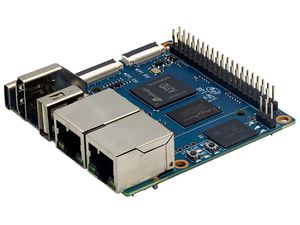
Banana Pi BPI-M2S Amlogic A311D chip
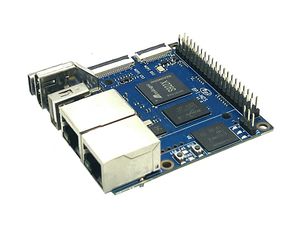
Banana Pi BPI-M2S Amlogic S922x chip
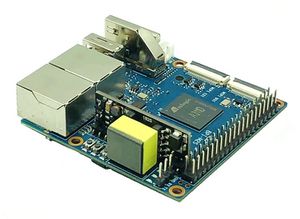
BPI-M2S with BPI-9600 IEEE 802.3af PoE module
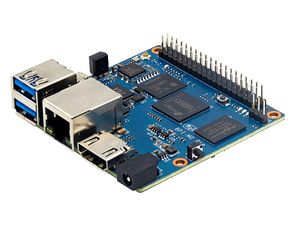
Banana Pi BPI-M2 Pro S905x3 design
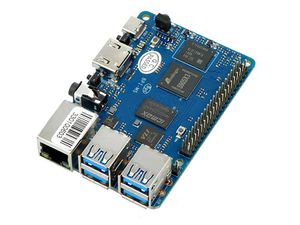
Banana Pi BPI-M5 Amlogic S905x3 design
specifications
development
Prepare
- 1. Prepare a usb-serial cable, a 5V/3A adaptor type-c power supply. The serial cable is used for console debug and type-c cable is used for android image download and ADB debug.
- 2. Prepare a SDcard at least 8GB for linux development, android only support emmc boot.
- 3. The SOC rom first boot media is emmc, so board can't bootup from SDcard if the emmc is bootable with any image flashed, more info please refer to board boot sequence.
- 4. Only A311D variant board have camera, mipi panel and npu support.
Android
Prepare
- 1. Download and install the AML Usb Burning Tool for android image download via type-c, only support windows.
- 2. Download the latest android image, and confirm that the md5 checksum is correct.
Install Image with Usb Burning Tool
- 1. Open USB_Burning_Tool.exe, select menu File->Import image, choose the android image file aml_upgrade_package.img.
- 2. Press and hold USB button on the board, plugin type-c usb cable to PC or press the RST button if power adapter already connected, about two seconds later, release the button, the board will be identified correctly.
- 3. Click the Start button of the download tool and wait for upgrade complete.
- 4. After Burning successfull, Unplug the type-c usb and connect to power supply adaptor to startup.
- 5. Click the Stop button to cancel the upgrade process and close the USB Buring Tool.
Install Image with Aml Flash Tool
- aml-flash-tool is a linux platform opensource image flash util for Amlogic android.
$ ./flash-tool.sh --img=/path/to/aml_upgrade_package.img --parts=all --wipe --soc=g12a --reset=y
Build Android Source Code
- 1. Get Android 9.0 source code
$ https://github.com/BPI-SINOVOIP/BPI-A311D-Android9
- or you can get the source code tar archive from BaiduPan(pincode: 8888) or GoogleDrive
- 2. Build the Android 9.0 Source code
- Please read the source code README.md
Android DTB overlay
- Bananapi M2S DTBO idx value table, default idx value is 0 in release image.
Bananapi M2S DTBO idx value table idx value device tree overlay description 0 android_p_overlay default dtbo, no use 1 wifi_bt_rtl8822cs enable bpi rtl8822cs wifi/bt module 2 i2c1 enable i2c 1 3 i2c2 enable i2c 2 4 sdio enable sdio 5 uart1 enable 2 pins uart 1 6 uart1_cts_rts enable 4 pins uart 1 7 uart2 enable 2 pins uart 2 8 hifi_pcm5122 enable i2s pcm5122 HiFi DAC
- How to apply a new dtbo
- 1. ADB command via sysfs
root@dangku-desktop:/tmp# adb root restarting adbd as root root@dangku-desktop:/tmp# adb remount remount succeeded root@dangku-desktop:/tmp# adb shell bananapi_m2s:/ # echo dtbo > /sys/class/unifykeys/name bananapi_m2s:/ # echo "1" > /sys/class/unifykeys/write bananapi_m2s:/ # reboot
- 2. Uart console command via sysfs
console:/ $ console:/ $ su console:/ # echo dtbo > /sys/class/unifykeys/name [ 115.702781@0] unifykey: name_store() 1302, name dtbo, 4 [ 115.702856@0] unifykey: name_store() 1311 console:/ # console:/ # echo "1" > /sys/class/unifykeys/write [ 129.262659@0] unifykey: write_store() is a string [ 129.262733@0] unifykey: dtbo, 1, 1 [ 129.265312@0] unifykey: amlkey_write 393 [ 129.292347@1] emmc_key_write:149, write ok console:/ # console:/ # reboot
- 3. Settings App(To-Do)
- Check the bootup uart debug message and confirm which dtbo is loaded actually, here "1" means set idx=1 to apply wifi_bt_rtl8822cs dtbo.
load dtb from 0x1000000 ......
Amlogic multi-dtb tool
Single dtb detected
find 2 dtbos
dtbos to be applied: 1
Apply dtbo 1
- Unifykeys is stored in a specific emmc part, "Normal erase" selected in USB_Burning_Tool will not erase this data for next update, you must select "Erase all" if you want the default dtbo idx to be applied after image download.
- Build Android image with a specific DTBO default.
- 1. Default build-in overlays are defined in device/bananapi/bananapi_m2s/Kernel.mk, you can add a new overlay dtbo here.
DTBO_DEVICETREE := android_p_overlay wifi_bt_rtl8822cs i2c1 i2c2 sdio uart1 uart1_cts_rts uart2 hifi_pcm5122
- 2. Default apply DTBO idx is defined in device/bananapi/bananapi_m2s/BoardConfig.mk, you can change the idx value to set which overlay dtbo will be applied default.
BOARD_KERNEL_CMDLINE += androidboot.dtbo_idx=0
- 3. DTS files are in common/arch/arm64/boot/dts/amlogic/overlay/bananapi_m2s/
- More info about android device tree overlays, please refer to google android offical site
Install OpenGapps
- 1. Download install package from OpenGapps, Android release image is arm/android 9.0 variant.
- 2. Download device_id.apk.
- 3. Copy the OpenGapp package to a udisk or sdcard root directory.
- 4. Create a txt file named factory_update_param.aml in udisk or sdcard root directory with the following android recovery parameter content, and replace the file name with the actual downloaded package.
- udisk:
--wipe_cache --update_package=/udisk/open_gapps-arm-9.0-pico-20210327.zip
- sdcard:
--wipe_cache --update_package=/sdcard/open_gapps-arm-9.0-pico-20210327.zip
- 5. Plugin the udisk or sdcard to the board and poweron.
- 6.OpenGapps install and certify.
- watch this video on bilibili
Switch Mipi Panel
- The default android release image only support one mipi panel because hw has no detect logic for different panel at boot, so [800x1280 bpi panel] enabled as default, but you can change to [1200x1920 bpi panel] as defualt in Settings->Panel Output
Panel Rotation
The two 10" mipi panels are all portrait hw display, so the default android release image is portrait mode, but you can rotate it to 90/180/270 in two ways.
- 2. SurfaceFlinger rotation, need modify android source code and build
- Change the default sf rotation property
diff --git a/device/bananapi/bananapi_m2s/bananapi_m2s.mk b/device/bananapi/bananapi_m2s/bananapi_m2s.mk
index 1f51703..d592a44 100644
--- a/device/bananapi/bananapi_m2s/bananapi_m2s.mk
+++ b/device/bananapi/bananapi_m2s/bananapi_m2s.mk
@@ -579,6 +579,6 @@ PRODUCT_PROPERTY_OVERRIDES += \
else
PRODUCT_PROPERTY_OVERRIDES += \
ro.sf.lcd_density=213 \
- ro.sf.primary_display_orientation=0
+ ro.sf.primary_display_orientation=90
endif
- Change the touch panel rotation in dts
diff --git a/common/arch/arm64/boot/dts/amlogic/bananapi_m2s.dts b/common/arch/arm64/boot/dts/amlogic/bananapi_m2s.dts
index 4a698b0..3d41b63 100755
--- a/common/arch/arm64/boot/dts/amlogic/bananapi_m2s.dts
+++ b/common/arch/arm64/boot/dts/amlogic/bananapi_m2s.dts
@@ -876,8 +876,8 @@
reg = <0x5d>;
reset-gpio = <&gpio GPIOA_6 GPIO_ACTIVE_HIGH>;
irq-gpio = <&gpio GPIOA_5 GPIO_ACTIVE_HIGH>;
- rotation = <4>; /* sf_rotation 0 */
- //rotation = <0>; /* sf_rotation 90*/
+ //rotation = <4>; /* sf_rotation 0 */
+ rotation = <0>; /* sf_rotation 90*/
//rotation = <5>; /* sf_rotation 180 */
//rotation = <3>; /* sf_rotation 270 */
Custom Android Boot Logo
- Android bootloader limit boot logo fb display size is 1080p60hz/1920x1080 default, and android kernel dtb partition table limit boot logo partition size to 16MB default .
- 1. Prepare a 16bit bmp file and named boot-logo.bmp
- 2. Compress the bmp file to boot-logo.bmp.gz
$ gzip boot-logo.bmp
- 3. Download m2s_android_bootlogo_tool.zip
- 4. Extract this tool
$ unzip m2s_android_bootlogo_tool.zip $ cd m2s_android_bootlogo_tool/ $ ls -l logo/ -rwxr--r-- 1 dangku dangku 525054 Sep 25 16:54 bootup.bmp -rwxr--r-- 1 dangku dangku 525054 Sep 25 16:54 bootup_secondary.bmp -rwxr--r-- 1 dangku dangku 184 May 19 2020 upgrade_bar.bmp -rwxr--r-- 1 dangku dangku 180072 May 19 2020 upgrade_error.bmp -rwxr--r-- 1 dangku dangku 180072 May 19 2020 upgrade_fail.bmp -rwxr--r-- 1 dangku dangku 180072 May 19 2020 upgrade_logo.bmp -rwxr--r-- 1 dangku dangku 180072 May 19 2020 upgrade_success.bmp -rwxr--r-- 1 dangku dangku 184 May 19 2020 upgrade_unfocus.bmp -rwxr--r-- 1 dangku dangku 180072 May 19 2020 upgrade_upgrading.bmp
- 5. Copy the boot-logo.bmp.gz
$ cp boot-logo.bmp.gz logo/bootup.bmp $ cp boot-logo.bmp.gz logo/bootup_secondary.bmp
- 6. Create target logo.img with img pack tool, the binary and related libs of m2s_android_bootlogo_tool are copy from <android-source-dir>/out/host/linux-x86
$ ./logo_img_packer -r logo logo.img
- 7. Flash boot logo with fastboot
$ adb root $ adb remount $ adb reboot fastboot
- Wait few seconds and check whether fastboot connected
$ fastboot device 1234567890 fastboot $ fastboot flashing unlock_critical $ fastboot flashing unlock $ fastboot flash logo logo.img $ fastboot reboot
Linux
Prepare
- 1. Linux image support SDcard or EMMC bootup, but you should read the boot sequence at first.
- 2. It’s recommended to use A1 rated cards, 8GB at least.
- 3. Make sure bootable EMMC is formatted if you want bootup from SDcard, more info refer to Erase EMMC for SDcard Bootup
- 4. Make sure SDcard is formatted without Linux image flashed if you want bootup from EMMC and use Sdcard as storage.
- 5. Install bpi-tools on your Linux PC(if flash image with other tools, ignore this step). If you can't access this URL or any other install problem, please go to bpi-tools source repo, download and install this tools manually.
$ apt-get install pv $ curl -sL https://github.com/BPI-SINOVOIP/bpi-tools/raw/master/bpi-tools | sudo -E bash
- 6. Download Linux latest Linux Image, and confirm that the md5 checksum is correct.
- 7. Default login: pi/bananapi or root/bananapi
- 8. The wiki guide is only for bananapi 4.9 bsp ubuntu/debian images.
Install Image to SDcard
- 1. Install Image with Balena Etcher on Windows, Linux and MacOS.
- Balena Etcher is an opensource GUI flash tool by Balena, Flash OS images to SDcard or USB drive
- 2. Install Image with Balena Cli on Windows, Linux and MacOS.
- Balena CLI is a Command Line Interface for balenaCloud or openBalena. It can be used to flash linux image. Download the installer or standalone package from balena-io and install it correctly to your PC, then you can use the "local flash" command option of balena to flash a linux image to sdcard or usb drive.
$ sudo balena local flash path/to/xxx-bpi-m2s-xxx.img.zip $ sudo balena local flash path/to/xxx-bpi-m2s-xxx.img.zip --drive /dev/disk2 $ sudo balena local flash path/to/xxx-bpi-m2s-xxx.img.zip --drive /dev/disk2 --yes
- 3. Install Image with dd command on Linux, umount SDcard device /dev/sdX partition if mounted automatically. Actually bpi-copy is the same as this dd command.
$ sudo apt-get install pv unzip $ sudo unzip -p xxx-bpi-m2s-xxx.img.zip | pv | dd of=/dev/sdX bs=10M status=noxfer
- 4. Install the linux image in udisk with bpi-tools on Linux, plug SDcard to Linux PC and run
$ sudo apt-get install pv unzip $ sudo bpi-copy xxx-bpi-m2s-xxx.img.zip /dev/sdX
Install Image to EMMC
- 1. Prepare a SDcard with Linux image flashed and bootup board with this SDcard.
- 2. Copy Linux image to udisk, plug the udisk to board and mount it.
- 3. Install with dd command, umount mmcblk0p1 and mmcblk0p2 partition if mounted automatically. Actually bpi-copy is the same as this dd command.
$ sudo apt-get install pv unzip $ sudo unzip -p xxx-bpi-m2s-xxx.img.zip | pv | dd of=/dev/mmcblk0 bs=10M status=noxfer
- 4. Install with bpi-tools command
$ sudo apt-get install pv unzip $ sudo bpi-copy xxx-bpi-m2s-xxx.img.zip /dev/mmcblk0
- 5. After download complete, power off safely and eject the SDcard.
Build Linux Source Code
- 1. Get the Linux bsp source code
$ git clone https://github.com/BPI-SINOVOIP/BPI-M2S-bsp
- 2. Build the bsp source code
- Please read the source code README.md
- 3. If you want build uboot and kernel separately, please download the u-boot the kernel only, get the toolchains, boot script and other configuration files from BPI-M2S-bsp
DTB overlay
- 1. DTB overlay is used for 40pin gpios multi-function configuration and install in vfat boot partition, you can check the mount point with mount command.
root@bananapi:~# ls /boot/overlays/ custom_ir.dtbo pwm_b-backlight.dtbo spi0.dtbo ds3231.dtbo pwm_c-beeper.dtbo uart1_cts_rts.dtbo hifi_pcm5102a.dtbo pwm_cd-c.dtbo uart1.dtbo hifi_pcm5122.dtbo pwm_cd.dtbo uart2.dtbo i2c1.dtbo pwm_ef.dtbo waveshare_tft24_lcd.dtbo i2c2.dtbo pwm_ef-f.dtbo waveshare_tft35c_lcd.dtbo pwm_ab.dtbo sdio.dtbo waveshare_tft35c_rtp.dtbo
- 2. Update the overlays env in vfat /boot/env.txt to enable what you want.
# Device Tree Overlays # uart1 -- Enable UART1 (uart_A, GPIO Header PIN8 & PIN10) # pwm_c -- Enable PWM_C (GPIO Header PIN7) # i2c2 -- Enable i2c2 (GPIO Header PIN3 & PIN5) # spi0 -- Enable SPI0 (GPIO Header PIN19 & PIN21 & PIN23 & PIN24) overlays="i2c2 spi0 uart1"
- 3. Must be restart the board for overlay dtb loaded.
Enable Camera
- The linux release image is camera disabled default, according to the following configuration, it can be enabled by yourself.
- 1. Update the dtb overlays env in /boot/env.txt to enable camera dtbo.
overlays="os08a10"
- 2. Add camera modules to /etc/modules
iv009_isp_iq iv009_isp_lens iv009_isp_sensor iv009_isp
- 3. Create and add camera modules options to /etc/modprobe.d/os08a10.conf
#choose camera calibration parameters options iv009_isp_iq cali_name=0 #choose isp register sequence options iv009_isp_sensor isp_seq_num=0
- 4. Enable camera isp systemd service
$ sudo systemctl enable camera_isp_3a_server.service
- Camera device is /dev/video0 after reboot.
Switch Mipi Panel
- The default linux release image only support one mipi panel because hw has no detect logic for different panel at boot, so 800x1280 bpi panel enabled as default, but you can change to [1200x1920 bpi panel] as defualt in /boot/lcd_env.txt
# Mipi panel type # Symbol | Resolution # ----------------------+------------- # "lcd_0" | 10" 800x1280 panel # "lcd_1" | 10" 1200x1920 panel panel_type=lcd_0
- Note: Dual display is not work on linux, so disconnect hdmi cable when mipi used.
Panel Rotation
- The two 10" mipi panels are all portrait hw display, so the default release image is portrait mode, but you can rotate it to 90/180/270.
- For Desktop image, create a xorg configuration file /usr/share/X11/xorg.conf.d/10-fbdev-rotate.conf with contents:
Section "Device"
Identifier "Configured Video Device"
# Rotate off
# Option "Rotate" "off"
# Rotate Right / clockwise, 90 degrees
Option "Rotate" "CW"
# Rotate upside down, 180 degrees
# Option "Rotate" "UD"
# Rotate counter clockwise, 270 degrees
# Option "Rotate" "CCW"
EndSection
Section "InputClass"
Identifier "Coordinate Transformation Matrix"
MatchIsTouchscreen "on"
MatchProduct "goodix-ts"
MatchDevicePath "/dev/input/event0"
MatchDriver "libinput"
# Rotate Right / clockwise, 90 degrees
Option "CalibrationMatrix" "0 1 0 -1 0 1 0 0 1"
# Rotate upside down, 180 degrees
# Option "CalibrationMatrix" "-1 0 1 0 -1 1 0 0 1"
# otate counter clockwise, 270 degrees
# Option "CalibrationMatrix" "0 -1 1 1 0 0 0 0 1"
EndSection
- For Server image, you can change the framebuffer rotation in two ways:
- 1. Sysfs dynamically change.
echo 0 > /sys/class/graphics/fbcon/rotate //origin 0 degree echo 1 > /sys/class/graphics/fbcon/rotate //90 degree echo 2 > /sys/class/graphics/fbcon/rotate //180 degree echo 3 > /sys/class/graphics/fbcon/rotate //270 degree
- 2. Boot Configuration change.
- change the fb_rotate env in /boot/env.txt
# Framebuffer Rotate # 0 - origin 0 degree # 1 - 90 degree # 2 - 180 degree # 3 - 270 degree fb_rotate=0
WiringPi
- Note: This WiringPi only support set 40pin gpio to output, input, pwm or software pwm, for io functions as i2c, spi, ..., you must enable dtb overlay in boot.ini
- 1. Build and install wiringPi, for debian, you must install sudo before build
$ sudo apt-get update $ sudo apt-get install build-essential git $ git clone https://github.com/Dangku/WiringPi $ cd WiringPi $ chmod a+x build $ sudo ./build
- 2. Run gpio readall to show all 40pins status.
- 3. BPI GPIO Extend board and examples in WiringPi/examples
- blinkall, blink all pin header gpios, no extend board.
- lcd-adafruit, BPI LCD 1602 display module example.
- oled, BPI OLED Display Module example.
- matrixled, BPI RGB LED Matrix Expansion Module example.
- berryclip, BPI BerryClip Module
RPi.GPIO
- Build and install, for debian, you must install sudo before build
$ sudo apt-get update $ sudo apt-get install build-essential python3 python3-pip python3-dev python3-setuptools git $ git clone https://github.com/Dangku/RPi.GPIO.git $ cd RPi.GPIO $ sudo python3 setup.py clean --all $ sudo python3 setup.py install
- Create and install wheel package
$ sudo python3 setup.py bdist_wheel $ sudo pip3 install dist/RPi.GPIO-XXX.whl
- Install from git source directly without development
$ sudo pip3 install git+https://github.com/Dangku/RPi.GPIO.git
- If the package is already installed, it should be uninstalled before installing the new one, or installing the new one with --force-reinstall option.
WiringPi-Python
- Build and install, for debian, you must install sudo before build
$ sudo apt-get update $ sudo apt-get install build-essential python3 python3-dev python3-setuptools swig git $ git clone --recursive https://github.com/Dangku/WiringPi-Python.git $ cd WiringPi-Python $ sudo python3 setup.py install
Luma.Examples
- luma.examples use GPIO.BCM gpio mode default, so you should map 40pin header pins to bcm gpio number and connect the hardware correctly.
- 1. build and install RPi.GPIO
- build bananapi m2s RPi.GPIO with python3 instead of python because luma uses python3.
$ sudo apt-get update $ sudo apt-get install build-essential python3 python3-dev python3-setuptools git $ git clone https://github.com/Dangku/RPi.GPIO.git $ cd RPi.GPIO $ sudo python3 setup.py clean --all $ sudo python3 setup.py install
- you can change the bcmledpin variable in test/led.py to your hardware backlight gpio and run it to check RPi.GPIO works well.
$ sudo python3 test/led.py
- hardware backlight will repeat on and off
- 2. luma.examples libs install
$ sudo usermod -a -G i2c,spi,gpio pi
- if group does not exist, the following command will create it:
$ sudo groupadd --system xxx
$ sudo apt-get install python3-dev python3-pip libfreetype6-dev libjpeg-dev build-essential $ sudo apt-get install libsdl-dev libportmidi-dev libsdl-ttf2.0-dev libsdl-mixer1.2-dev libsdl-image1.2-dev $ git clone https://github.com/rm-hull/luma.examples.git $ cd luma.examples
- install luma.core, luma.emulator, luma.lcd, luma.le-matrix, luma.oled pip libs, make sure this step without error or downloading interrupted, try again if get errors
$ sudo -H pip install -e .
- or
$ sudo -H pip3 install -e .
- for debian buster(python 3.7) which does not include /usr/bin/pip in package python3-pip, and will get the following errors when install luma packages with pip3
... WARNING, No "Setup" File Exists, Running "buildconfig/config.py" Using UNIX configuration... /bin/sh: 1: sdl2-config: not found /bin/sh: 1: sdl2-config: not found /bin/sh: 1: sdl2-config: not found ...
- install sdl2 related packages to fix this issue, then install luma libs again with pip3
$ sudo apt-get install libsdl2-dev libsdl2-ttf-dev libsdl2-mixer-dev libsdl2-image-dev $ sudo -H pip3 install -e .
- check installed luma pip libs
$ pip3 list | grep luma luma.core 2.4.0 luma.emulator 1.4.0 luma.lcd 2.10.0 luma.led-matrix 1.7.0 luma.oled 3.11.0
- 3. examples test
- Enable i2c or spi overlays before running test examples
$ cd examples $ sudo python3 bounce.py --config ../conf/ili9341.conf
HDMI LCD
Bananapi M2S Tested HDMI LCD panel /boot/env.txt Waveshare 3.5inch 480x320 hdmi_autodetect=no hdmi=480x320p60hz
Waveshare 3.5inch 640x480 Waveshare 4inch 720x720 Waveshare 5inch 800x480 Waveshare 5.5inch 1440x2560 hdmi_autodetect=no hdmi=1440x2560p60hz
Waveshare 7inch 800x480 Waveshare 7inch 1024x600 Waveshare 7.9inch 400x1280 Waveshare 8inch 1536x2048 hdmi_autodetect=no hdmi=1536x2048p60hz
Waveshare 8.8inch 480x1920 Waveshare 9inch 2560x1600 hdmi_autodetect=no hdmi=2560x1600p60hz
Waveshare 10.1inch 1024x600 Waveshare 10.1inch 1280x800 Waveshare 11.9inch 320x1480 Waveshare 13.3inch 1920x1080 Waveshare 15.6inch 1920x1080
- backlight control
https://github.com/Dangku/Waveshare-USB-Brightness
Custom Linux Boot Logo
- Linux uboot limit boot logo fb size to 1080p60hz/1920x1080 default, so oversize resolution will not be supported by default image, but you can modify uboot source code to support it.
- 1. Prepare a 24bit bmp file and named boot-logo.bmp
- 2. copy the target file to /boot/firmware/ or /boot/ directory.
Other Development
Boot Sequence
- Check bootloader loaded from SDcard or EMMC at the beginning of the console debug messages
- 1. Rom load bootloader from SDcard (Linux log example)
... BL2 Built : 15:21:42, Mar 26 2020. g12a g486bc38 - gongwei.chen@droid11-sz Board ID = 1 Set cpu clk to 24M Set clk81 to 24M Use GP1_pll as DSU clk. DSU clk: 1200 Mhz CPU clk: 1200 MHz Set clk81 to 166.6M board id: 1 Load FIP HDR DDR from SD, src: 0x00010200, des: 0xfffd0000, size: 0x00004000, part: 0 fw parse done PIEI prepare done fastboot data verify result: 255 Cfg max: 12, cur: 1. Board id: 255. Force loop cfg DDR4 probe ...
- 2. Rom load bootloader from EMMC(Android Log example)
... Board ID = 1 Set cpu clk to 24M Set clk81 to 24M Use GP1_pll as DSU clk. DSU clk: 1200 Mhz CPU clk: 1200 MHz Set clk81 to 166.6M eMMC boot @ 0 sw8 s board id: 1 Load FIP HDR DDR from eMMC, src: 0x00010200, des: 0xfffd0000, size: 0x00004000, part: 0 fw parse done PIEI prepare done 00000000 emmc switch 1 ok ddr saved addr:00016000 Load ddr parameter from eMMC, src: 0x02c00000, des: 0xfffd0000, size: 0x00001000, part: 0 00000000 ...
Erase EMMC for SDcard Bootup
- There are four possible scenarios should be pay attention to, EMMC already flashed Android image, EMMC already flashed Linux image, boot process hangup in BL2 and EMMC empty.
- 1. Bootable EMMC with Android image flashed
- a). Using usb burning tool, unplug the type-c usb cable while the download process at 7% formatting
- b). Using Android Fastboot tool, make sure the adb/fastboot tools is work on your PC before doing this.
root@dangku-desktop:/tmp# adb root adbd is already running as root root@dangku-desktop:/tmp# adb remount remount succeeded root@dangku-desktop:/tmp# adb shell bananapi_m2s:/ # reboot fastboot
- Wait a few seconds for board reboot to fastboot mode
root@dangku-desktop:/tmp# fastboot devices 1234567890 fastboot root@dangku-desktop:/tmp# fastboot flashing unlock_critical ... OKAY [ 0.044s] finished. total time: 0.044s root@dangku-desktop:/tmp# fastboot flashing unlock ... OKAY [ 0.047s] finished. total time: 0.047s root@dangku-desktop:/tmp# fastboot erase bootloader erasing 'bootloader'... OKAY [ 0.059s] finished. total time: 0.059s root@dangku-desktop:/tmp# fastboot erase bootloader-boot0 erasing 'bootloader-boot0'... OKAY [ 0.036s] finished. total time: 0.036s root@dangku-desktop:/tmp# fastboot erase bootloader-boot1 erasing 'bootloader-boot1'... OKAY [ 0.035s] finished. total time: 0.035s
- c). Using uboot command, connect a debug console cable and press ESC while power on to enter uboot command line
bananapi_m2s_v1#amlmmc erase 1 emmckey_is_protected(): protect start = 0,end = 57343 start = 221184,end = 30535679 Erasing blocks 0 to 8192 @ boot0 start = 0,end = 8191 Erasing blocks 0 to 8192 @ boot1 start = 0,end = 8191 bananapi_m2s_v1#reset resetting ... SM1:BL:511f6b:81ca2f;FEAT:A0F83180:20282000;POC:F;RCY:0;EMMC:0;READ:0;CHK:1F;READ:0;CHK:1F;READ:0;CHK;
- These two ways actually erase the bootloader part of EMMC android, After bootup from SDcard Linux, You'd better format the whole EMMC by dd command.
- d). The simplest way is insert the SDcard with Linux image flashed before power on, the Android bootloader will check boot.ini file whether exist in SDcard vfat partition, so that the SDcard Linux will bootup. After bootup, you can format the whole EMMC by dd command and then flash the Linux image to EMMC.
... BPI: try boot from sdcard reading boot.ini 2453 bytes read in 3 ms (797.9 KiB/s) ## Executing script at 03080000 Starting boot.ini... reading env.txt 3483 bytes read in 7 ms (485.4 KiB/s) HDMI: Autodetect: 1080p60hz reading Image.gz 10924573 bytes read in 611 ms (17.1 MiB/s) reading bananapi_m2s.dtb 88054 bytes read in 12 ms (7 MiB/s) reading uInitrd 11704481 bytes read in 655 ms (17 MiB/s) reading overlays/wifi_bt_rtl8822cs.dtbo 729 bytes read in 6 ms (118.2 KiB/s)
- 2. Bootable EMMC with Linux image flashed
- a). Using uboot command, connect a debug console cable and press ESC while power on to enter uboot command line
bananapi_m2s# mmc erase 0 1000
- b). Linux u-boot also check boot.ini file whether exist in SDcard vfat partition so that the SDcard Linux will bootup. After bootup, you can format the whole EMMC by dd command or flash the Linux image directly to EMMC.
- 3. A extreme situation is bootloader or uboot corrupted, Rom load it from EMMC but hangup in u-boot or BL2, for example the boot process will hangup in BL2 of EMMC if dram init failed, The only way is format the EMMC with usb burning tool, or download the Android image completely and then try other ways to erase EMMC or flash Linux image to EMMC.
- 4. Rom will try to load bootloader from SDcard directly if EMMC is empty.
Erase Emmc Android by dd command
- If the board is flashed android before, the whole emmc must be erased by these commands if you want bootup it with SDcard Linux image.
$ sudo dd if=/dev/zero of=/dev/mmcblk0boot0 bs=1M status=noxfer $ sudo dd if=/dev/zero of=/dev/mmcblk0boot1 bs=1M status=noxfer $ sudo dd if=/dev/zero of=/dev/mmcblk0 bs=1M status=noxfer $ sync
Wifi/BT support
- 1. Android test and support.
rtl8723bu wifi/bt(usb) rtl8188eu wifi(usb) rtl8821cu wifi/bt(usb) rtl8822cs wifi/bt(sdio/uart) rtl8814au wifi(usb), please get the aircrack-ng driver and install.
- How to enable Android Wifi/BT
- USB type: Plug-in the usb dongle to usb host port and reboot the system, After bootup, you can enable or disable wifi and bluetooth in Settings app.
- SDIO/UART type: Connect the hardware module to 40pin header correctly and configure the Android DTB overlay to enable it.
- Note: Android is not support that ethernet and wifi are both connected at the same time, Ethernet have a higher prioprity than wifi, it means wifi can't connect network if ethernet already connected, and wifi will drop connection if ethernet cable plugin.
- 2. Linux test and support.
rtl8188eu wifi(usb) rtl8192eu wifi(usb) rtl8723bu wifi/bt(usb) rtl8811au wifi(usb) rtl8812au wifi(usb) rtl8812bu wifi(usb) rtl8821cu wifi/bt(usb) rtl8822cs wifi/bt(sdio/uart)
- How to enable Linux Wifi
- Wifi module drivers are already prebuild in the release images.
- USB type: Plug-in the usb dongle to usb host port and driver will be loaded automatically.
- SDIO/UART type:
- 1). Connect the hardware module to 40pin header correctly.
- 2). Configure the dtb overlay
overlays="wifi_bt_rtl8822cs"
- 3). Add the wifi module name to /etc/modules for loaded automatically next boot.
# This file contains the names of kernel modules that should be loaded # at boot time, one per line. Lines beginning with "#" are ignored. 88x2cs
- How to enable Linux Bluetooth
- 1). Please download rtk-linux-bt-driver source code, build and install usb or uart rtk linux bluetooth drivers/firmwares to your image.
- 2). For USB type, plug-in the usb dongle to usb host port and driver will be loaded automatically.
- 3). For UART type, Configure the dtb overlay as the same as wifi before install the bluetooth drivers/firmwares. hci_uart driver will be loaded when rtk-hciuart.service start.
Cloud-init&Snap
- Cloud-init and Snap service are enabled default, you can disable or remove them.
- 1. disable or remove cloud-init
$ sudo touch /etc/cloud/cloud-init.disabled
- or
$ sudo apt purge cloud-init
- 2. disable or remove snap
$ sudo apt purge snapd
Enable rc-local
- The systemd service rc-local.service already exists in release image, but there is no [Install] part in the unit file. As a result, Systemd is unable to enable it. First, we must update the file.
$ sudo nano /lib/systemd/system/rc-local.service
[Unit] Description=/etc/rc.local Compatibility Documentation=man:systemd-rc-local-generator(8) ConditionFileIsExecutable=/etc/rc.local After=network.target [Service] Type=forking ExecStart=/etc/rc.local start TimeoutSec=0 RemainAfterExit=yes GuessMainPID=no [Install] WantedBy=multi-user.target Alias=rc-local.service
- Create /etc/rc.local file.
sudo nano /etc/rc.local
#!/bin/sh # # rc.local # # This script is executed at the end of each multiuser runlevel. # Make sure that the script will "exit 0" on success or any other # value on error. # # In order to enable or disable this script just change the execution # bits. # # By default this script does nothing. exit 0
- Add executable permission to /etc/rc.local
$ sudo chmod +x /etc/rc.local
- Enable rc-local.service and reboot
$ sudo systemctl enable rc-local.service $ sudo reboot
Enable sudo for Debian
- The release Debian image do not install sudo default, with "su -" command, user can change to root. If you like sudo, you can install it.
$ su root Password:(enter bananapi) # apt-get update # apt-get install sudo # adduser pi sudo
- Then please do logout and login again
Install Docker Engine
- Install Docker Engine on Ubuntu 20.04 Server
- 1. Set up the repository
- Update the apt package index and install packages to allow apt to use a repository over HTTPS:
$ sudo apt-get update $ sudo apt-get install apt-transport-https ca-certificates curl gnupg lsb-release
- Add Docker’s official GPG key:
$ curl -fsSL https://download.docker.com/linux/ubuntu/gpg | sudo gpg --dearmor -o /usr/share/keyrings/docker-archive-keyring.gpg
- Set up the stable repository
$ echo \
"deb [arch=arm64 signed-by=/usr/share/keyrings/docker-archive-keyring.gpg] https://download.docker.com/linux/ubuntu \
$(lsb_release -cs) stable" | sudo tee /etc/apt/sources.list.d/docker.list > /dev/null
- 2. Install Docker Engine
$ sudo apt-get update $ sudo apt-get install docker-ce docker-ce-cli containerd.io
- 3. Verify the Docker Engine is installed correctly by running the hello-world image.
$ sudo docker run hello-world
Install docker with a simple command
$ curl -sSL get.docker.com | sudo sh
Install Docker Engine on other Linux distributions
